The independent newspaper of Washington University in St. Louis since 1878
BALLOON GLOW
The 51st annual Forest Park Balloon Festival lifted off Friday night.

(Scene, pg 4)
SMALL TALK SUCKS
A freshman laments about least favorite social interactions.
(Forum, pg 7)
WashU drops to No. 24 in U.S. News rankings following changed formula
50 POINT WIN Football crushes Millikin, ahead of home opening. (Sports, pg 6)

#4 women’s soccer grabs two commanding wins to remain undefeated
HUSSEIN AMURI MANAGING SPORTS EDITOR
Scoreless in the first half, the #4 Washington University women’s soccer team headed toward its first draw of the season. A stubborn Rhodes College defense proved too difficult to break down. From counter after counter, crosses after crosses, the Bears’ attacks were not connecting. But all that changed in the 59th minute, when a handball inside the Lynx’ penalty box awarded WashU with a penalty.
Tasked to put the ball into the net was senior midfielder Jessica Greven, having done so in the Bears’ previous game.
Washington University ranked No. 24 in the annual Best National University Rankings list by U.S. News & World Report, nine spots lower than last year’s No. 15 ranking. The report was published on Sunday evening.
The change follows an adjustment to U.S. News’ methodology that was announced in May. The new ranking methodology places increased weight on a university’s “success in graduating students from different backgrounds” and removes alumni giving, faculty with a terminal degree, class size, and high school standing as ranking factors.
Several of the University’s peer institutions also experienced movement in rankings, including the University of Chicago, which dropped from No. 6 to No. 12, and Dartmouth College, which dropped from No.12 to No. 18. Some large public schools moved ahead of the University in the new rankings, including the University of California, Los Angeles and The University of California, Berkeley — both of which are now tied for No. 15, up from No. 20.
“The large public schools that tended to benefit the most from the change are incredible institutions who have been doing the work of socioeconomic mobility for decades, and I’m honestly happy to see them recognized for that work — it’s pushing us to really center that as core,” Jennifer Smith, Vice Provost for Educational Initiatives, said.
In a statement to Student Life,
Provost Beverly Wendland wrote that U.S. News uses data from as far back as 2011 from which to base their rankings — though she said that the reasons for the utilization of old data are unclear.
Since 2011, Washington University’s efforts to increase socioeconomic diversity on-campus include Pell-grant initiatives, a needblind admissions policy, and their most recent “no loan” policy. Smith said that the change in the U.S. News rankings shows a legacy of the University having moved late in diversifying its student body.
“We still expect this to be a tailwind that helps us, but everybody is trying to do better on this,” she said. “We will benefit from [the work] in the rankings as years go on.”
Wendland also said that current efforts will likely show up in rankings years into the future.
“What matters today is that, about 10 years ago, our previous administration decided to make a serious commitment to increasing socioeconomic diversity, and we have been working hard at it ever since,” Wendland wrote. “This progress is not reflected in this year’s U.S. News ranking, and we look forward to seeing improvement in this metric in future years, when the data catch up with the ranking.”
Smith said that regardless, rankings are still arbitrary, as seen by how drastically they can change when different factors of an institution are given different weights.
She guesses that U.S. News moved toward a methodology that is reliant on public information in order to avoid universities providing outdated or incorrect information. Last year, Columbia University’s inflation of statistics made national news.
Subjectivity in ranking methodologies has long been subject to criticism, as seen by the withdrawal of Yale and Harvard Law School from the U.S. News rankings last year.
Earlier this year, alongside several other top-ranked medical schools, Washington University’s School of Medicine also pulled out of the U.S. News rankings, stating that the rankings are too easily manipulated and serve as a “flimsy scaffolding upon which to base our pride and satisfaction.”
According to a report summarized by Inside Higher Ed, students might not rely heavily on rankings when choosing a school. Only about 25% of surveyed students reported that they paid attention to any one particular ranking source.

“Our students have wildly variable experiences, and what makes it good for each of our students can be really different,” Smith said. “So how do you reduce that to a couple of numbers?”
Wendland said that, looking forward, it is difficult to say how the University’s drop in rankings will affect prospective-student pools.
“I don’t think there will ever be a perfect ranking, but this seems to be a step in the right direction, at least in terms of measuring something that actually matters,” she wrote.
For first-year Rohan Reddy, rankings were not a huge factor in his decision to come to the University — rather, he was drawn in by the cooperative environment.
“It’s nice to have rankings to see if one college is better than other in general, but I don’t think rankings should be taken too seriously, because it depends on what the best college for you should be,” Reddy said.
Senior Mary Falstin echoed that
rankings did not affect her decision, saying that she chose to come to the University because it was where she felt most supported as a firstgeneration, low-income student.
However, there are students to whom the U.S News list played a large role in their college-decision process.
Junior Brenna Loftus said, “My mindset was just ‘Go to the best school you can get into,’ and rankings definitely played a part in that.”
Junior Illiana Wong shared that it was others’ opinions that played a significant factor in her commitment to the University.
“[Rankings] certainly had some effect with my parents — they obviously want me to go to a good school,” Wong said. “There’s that image that elite schools put on students, and also an expectation, [which] students who go to more elite schools get forced under, so there’s a lot of pressure.”
Ultimately, the University plans to continue emphasizing student outcomes and upward socioeconomic mobility, Smith said.
“All we have to do to get better is [to] keep admitting first-gen, limitedincome students and graduate all of our students the best we can,” Smith said. “Things that we would need to do to improve within the rankings are things [that] we are doing anyway — and believe in doing.”
The fall in rankings has raised concerns among students that the University’s quality of educational services has decreased; however, Wendland wrote that this is not the case.
“We haven’t changed; the U.S. News ranking has. WashU remains as strong as ever, and we all should be proud of this world-class institution,” Wendland wrote.
“Jess does a great job in the midfield very well and stepped up when we needed her to,” said women’s soccer head coach Jim Conlon after the game.
Stepping up is just what she did. With great composure and ease, the veteran from Carmel, Indiana, buried the ball into the bottom right corner beyond the reach of the Rhodes goalkeeper to give WashU a 1-0 lead.
“Let’s Go WashU, Let’s Go!” chanted a group of young girls who came to support the team in the stands.
This past Sunday, women’s soccer fought its way to a commanding 4-0 victory against Rhodes College to record its second win in three days. The Bears had previously beaten DePauw College 4-0 Friday evening. With these wins, the team improves their season record to 5-0, remaining undefeated. Not only did the team manage to stay undefeated, but it also recorded another shutout — their fifth of the season. Led by senior goalkeeper Sid Conner, the Bears have yet to concede a single goal this season, making them the most formidable defensive unit in Division III women’s soccer right now. This impressive defensive catalyst was backed by an offensive engine that scored eight goals in those two games, bringing the season total to 23 goals so far.
“I feel like our women are really starting to understand what we’re trying to do on the training pitch and transfer it over to the game field,” Conlon said. “I mean, when you go that deep and everyone’s running, you want them to run in the game. I’m just proud of them for understanding what we’re trying to do from the whole team.”
SEE SOCCER, PAGE 5
Weekend sees multiple off-campus car break-ins
believes that the WUPD patrols are in the right place, but that patrol zones are large and car break-ins occur quickly.
In the past week, at least nine student-owned cars were broken into in the neighborhoods surrounding Washington University, and nine individuals, including at least five juveniles, were detained by police officers in relation to these vehicle break-ins, according to the WashU Police Department (WUPD).
Angela Coonce, Chief of WUPD, said that the department increased patrols in affected areas in response to the break-ins. She
“There’s areas like the 6300 block of Enright, where there were eight cars broken into, [where] we’ve had a lot of extra patrol[s] this week,” Coonce said.
Coonce said that Fox 2 St. Louis reported on a “spree of shattered car windows” in the Central West End between Saturday night and Sunday morning, and that the incidents might be related because the windows were broken.
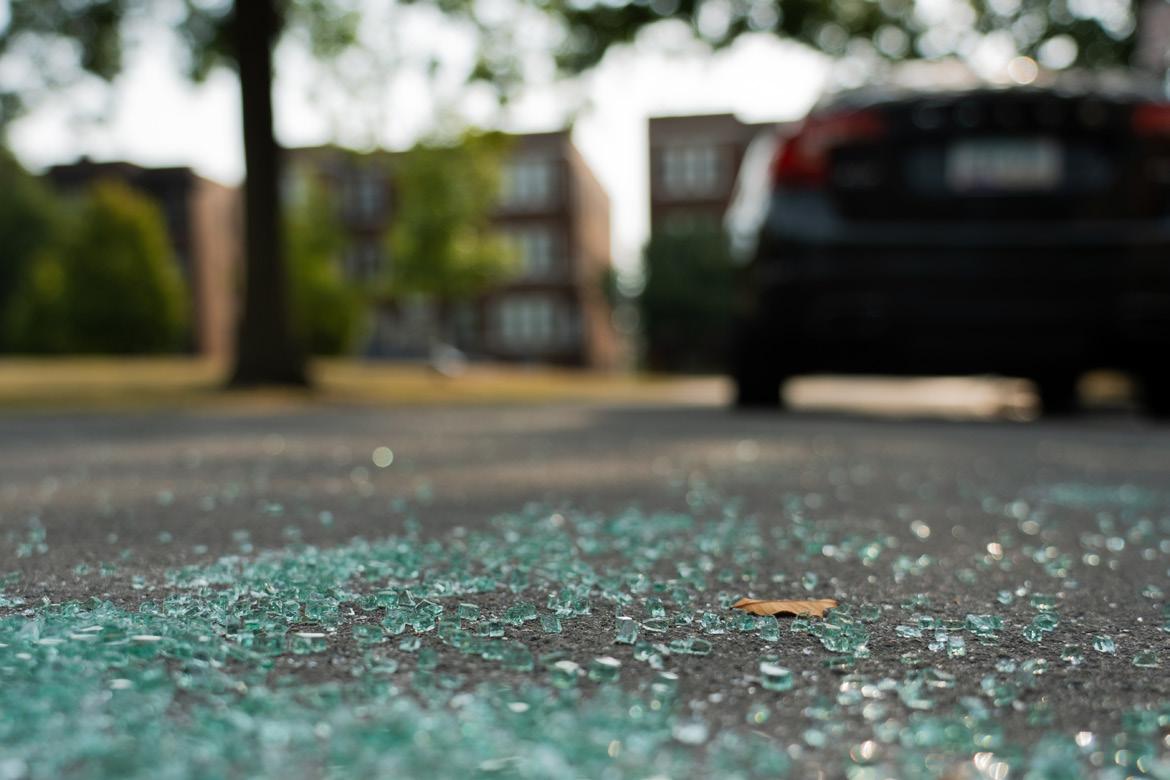
“Ten years ago, it was common to break out the windows, but now, a lot of times, they’ll just check the
car doors and see if they’re open, because it’s a lot faster,” Coonce said. WUPD informed Student Life of the 13 total break-ins that occurred in the past week, nine of which were confirmed to be damage to student vehicles.

Read the rest online:
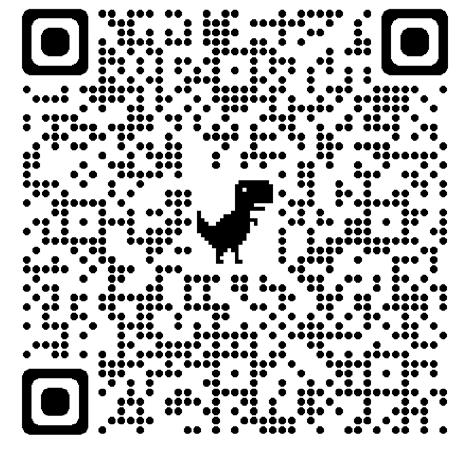
CONTACT BY POST ONE BROOKINGS DRIVE #1039 #320 DANFORTH UNIVERSITY CENTER ST. LOUIS, MO 63130-4899 CONTACT BY EMAIL EDITOR@STUDLIFE.COM NEWS@STUDLIFE.COM CALENDAR@STUDLIFE.COM CONTACT BY PHONE NEWSROOM 314.935.5995 ADVERTISING 314.935.4240 FAX 314.935.5938
WWW.STUDLIFE.COM VOLUME 145, NO. 4 THURSDAY,
SEPTEMBER 21, 2023
NINA GIRALDO LUKE MYERS MIREYA COFFMAN SHAZA ALI SENIOR NEWS EDITOR STAFF WRITER CONTRIBUTING WRITERS
ALIANA MEDIRATTA SRUTHI KOTLO TANVI GORRE JUNIOR NEWS EDITOR CONTRIBUTING WRITERS
ILLUSTRATION BY MANUEL LOPEZ
ELLE SU | STUDENT LIFE
At least a dozen cars were broken into in the area surrounding WashU’s campus over the weekend.
Sam Fox grapples with AI changing the creative landscape
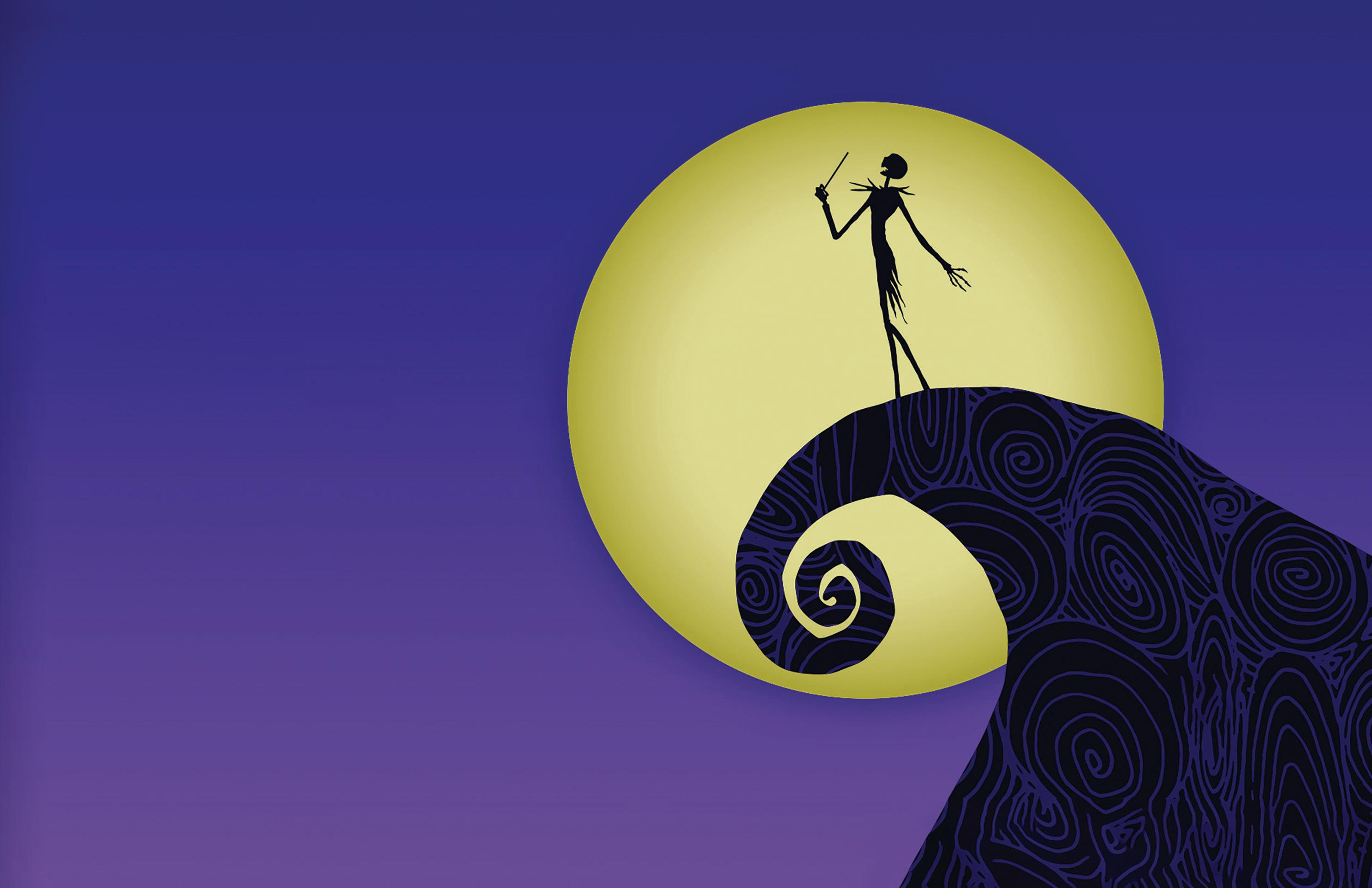
and are actively thinking about how the technology should be used in courses.
“AI is here to stay, I don’t think you can avoid it,” Colangelo said. “It’ll bring some really good things to our world, and it’ll do some really evil things too.”

While people quickly integrated word-based generative AI bots into their daily work and philosophical discussions about work, similar technology is raising major ethical and technical questions for academics and students involved in the art world.
Similarly to ChatGPT, users can prompt AI-generated art platforms, such as DALL-E or Midjourney, with specific requests, and bots output art using machine learning algorithms that iterate from preexisting pieces of art.
Faculty in the Sam Fox School of Art and Design are grappling with questions of how to integrate these platforms into the course content, how AI will change the field of art, and how artists can have a role in broader conversations surrounding artificial intelligence.
Carmon Colangelo, the Dean of Sam Fox, said that Sam Fox professors recognize the inevitability of AI in art
He said that the conversation about AI in Sam Fox is ongoing and that faculty are in the process of discussing how the technology fits into curriculum and pedagogy.
“We’re embracing the fact that it’s here, but we’re not necessarily just saying blindly, ‘this is a great thing’,” he said.
Jonathan Hanahan, an assistant professor in the Sam Fox School of Design & Visual Arts, similarly said that Sam Fox professors are likely to ask students to use these tools in their courses.
“We’re trying to encourage the use of these things because they aren’t going anywhere and they have a lot of potential,” he said.
In the coming years, Sam Fox will be implementing AI into new programs and integrating the technology into existing courses. In addition, Colangelo said that the college is looking to hire
a professor for Sam Fox with AI expertise.
“We’re hiring the first AI plus designer —– a professor with an expertise in AI, architecture, art or design,” said Colangelo. “We’re [also] going to start a new master’s design program in emerging technology.”
Hanahan said that this masters program will look to explore how to ethically create art and specifically discuss the idea of what constitutes original art.
“Art and design think about authorship in a different way [than other] disciplines,” Hannahan said. “Appropriation has always been a part of art and design.”
Some professors are looking to spend class time on teaching students how to integrate the technology into their work.
Chandler Ahrens, an associate professor at Sam Fox, said that AI can be used as a tool for developing art projects.
“There are some faculty, myself included, who encourage our students to use these tools as a way of sketching out ideas,” Ahrens said. “It is a tool, and all tools give you feedback.”
Hanahan said that Sam Fox professors should make
sure that students are engaged in a conscious dialogue of how and why they implement AI in their course work. “The context of how [a work of art] is created is much more interesting and valuable than just the thing itself,” he said.
Hanahan added that he thinks Sam Fox students are particularly prepared for the transition to a world with generative AI because they have experience working with tools, like Adobe software, that change frequently.
“That foundational nimbleness is already there,” he said.
One of the specific topics that comes up in discussion about using AI in courses is how artificially generated content can be detected in assignments.
“I think the whole idea of AI detectors is…a short-term solution,” Colangelo said. “We’re not going to police this thing.”
Ahrens said he is not currently worried about AI infringing upon academic integrity.
“A lot of the faculty have the knowledge to be able to tell what images are generated,” Ahrens said. “At this point,

ILLUSTRATION BY RYAN DAVIS

it’s not as much of a concern.”
Like faculty, students are grappling with the implications of using generative AI in their art classes, and several said they believe AI currently lacks the ability to achieve their desired artistic goals.
Read the rest online:
Student Union holds first joint session, approves election commission members
attendance at the session.
Student Union holds first joint session, approves election commission members.
In the first joint session of the semester on Sept. 19, Student Union (SU) Treasury and Senate approved three new members to the Election Commision. The same night, Treasury representatives allocated $26,479.96 in funding to seven student groups.
During the joint session, Election Commissioner and senior Constantin Carrigan nominated three new candidates to the Election Commission. The candidates, Ella Horejsi, Mariel Scher, and Justin Zhu, are all members of the
Treasury representative and junior, Saish Satyal, asked if the present candidates had any plans for increasing voter engagement on campus. Horejsi and Scher responded that they believe they have a unique position as members of the freshman class to educate and increase voter turnout among their classmates. Carrigan provided an explanation as to why the election commission has increased in size. He said that in the past, it has not been a self-sustaining body.
“The election commission is now a lifetime appointment, as well as the commissioners office, and so it seems pretty difficult to just nominate a new election commission every single year,” Carrigan said. “With
After the discussion, all three candidates were unanimously confirmed by both branches of SU, concluding the joint session.
Seven student groups appealed for a total of $28,531.66. Treasury approved $26,479.96 of funds to be allocated to the various student groups, bringing the semester total to $61,165.49.
Club Hockey appealed for funds to compete in the Northwestern Tournament in Evanston, IL, requesting a total of $5,260. This request included $4,000 for a charter bus, $960 for eight hotel rooms, and $300 for food.
The request for funds to cover meals was eliminated due to Treasury policy to not fund food. Club Hockey’s
cited safety and economic concerns. Treasury policy dictates that groups are not allowed to drive between the hours of midnight and 4 a.m. to avoid accidents, which the group mentioned might be an issue due to their tournament schedule.
Treasury Representatives suggested spending extra nights at the hotel to allow the team to drive at earlier times in the day, which would save money overall.
The debate also centered around the role that precedent should play in their decision-making process, since Treasury had funded a similar request in the past. The representatives came to the consensus that precedent from previous years should not dictate the policies of the new Treasury.
After further discussion,
for a charter bus. Club Hockey was funded $3,779, subsidizing $2,819 of the requested $4,000 for a bus.
KWUR, WashU’s student-led radio station club, appealed for additional funds. It hoped to cover the artist fee and backline fee for Tchotchke in order to provide a free concert for undergraduate students.
KWUR requested $2,600 and was funded in full. $1,750 of the funds are for the artist fee, which cover the performing artists’ transportation and lodging.
Mock Trial appealed for funds to attend the 27th Yale Invitational and received $4,794.
The Wilderness Project appealed for additional funds for its Fall Break Backpacking Trip, requesting $2,589.26; it
funds to cover race entry fees and transportation costs for the GO STL! Halloween Race. It requested $7,964, which was funded in full.
Quiz Bowl was allocated $1,402 to cover the cost of a tournament at The University of Illinois at Urbana-Champaign.
Club Tennis appealed for funding for two separate tournaments: the Illini Invite and the USTA Tennis on Campus Mississippi Championship. The club requested $1,662 and $1,836, respectively, for the events — both of which were funded in full.
Saish Saytal is a member of the Student Life editing team. He did not have any influence or oversight of the reporting, writing, or editing of this
NEWS AVI HOLZMAN | MANAGING NEWS EDITOR | NEWS@STUDLIFE.COM 2 STUDENT LIFE THURSDAY, SEPT 21, 2023
ALIANA MEDIRATTA LEWIS RAND JUNIOR NEWS EDITOR CONTRIBUTING WRITER JOEL SWIRNOFF NEEL KULKARNI JULIA ROBBINS STAFF WRITER CONTRIBUTING WRITER INVESTIGATIVE NEWS EDITOR
Treasury Appeals Joint Session The Nightmare Before Christmas In Concert Presentation licensed by © Disney, All Rights Reserved. Tim Burton’s Oct 6 & 8 Fri at 7:00pm, Sun at 2:00pm with Live Orchestra Film
As of this semester, a new policy from the Office of Student Life now requires all student group events to be registered and approved at least two weeks before the event is scheduled, causing logistical concerns for student groups on campus.
Previously, student groups only had to register events that fell under a specific set of criteria, but now all events must be approved, which has led to confusion among student group leaders who feel the policy is unclear.
Under the previous policy, events that required a 15 business day advance registration were those that involved community service, alcohol, policy applications, and events with minors. Any event that includes travel required groups to register 20 business days in advance
All events, including general body meetings, now have to be registered 14 days in advance on Washington University Group Organizer (WUGO), an online platform that WashU’s Office of Campus Life uses to coordinate with student groups.
Scott Williams, the Campus Life Event Coordinator, outlined the reasoning behind the changes made to event registration policy, explaining that the office receives a significant amount of requests from groups.
“We know that students do want more time, [but] from the event side, there are over 3,000 event requests from August 13th to September 30th,” Williams said. “The sheer number means that we have to ensure we have a timeframe where we can get everything processed and make everything successful.”
Williams said that in the past, having different timelines for different types of events created confusion.
“We’re really looking to streamline things and clear up any ambiguity of the policies,” Williams said.
He also highlighted issues that Campus Life has faced in the past with student groups having different definitions of a general body meeting, which historically complicated the event registration process.
“We have a lot of groups who were registering their events as general body meetings, but really when it comes down to it, you’re reading through the description and it’s more fundraising [or] recruitment,” Williams said.
To solve this problem, instead of trying to focus on enforcing the definition of a general body meeting, Williams emphasized that it made more sense to standardize event registration and create one process.
However, for many student group leaders, a lack of proper guidelines on how
to use the new system has caused confusion about room bookings.
Senior Lindsey Gorman, President of the service fraternity Alpha Phi Omega (APO), said that she felt frustrated by the new policy.
“There’s not a lot of clarity with the process,” Gorman said. “We had a period of time where random people in our group could reserve rooms, but not the people who needed to.”
Groups have particularly found the travel regulations of the policy complicated, given that trips where groups travel over 50 miles require more information to register than in previous years.
Senior Carsen Codel, President of WashU’s Run Club, said that filling out the form, which asks for information such as hotel reservations and transportation arrangements, is difficult.
“Regardless of when the event is in the semester, a club doing an overnight trip is going to be confused as to how to approach properly
filling out a WUGO form,” Codel said.
Some other groups have struggled with the timing constraints of the new policy.
Robert Burch, President of the Washington University College Democrats, said that he is concerned about adhering to the 14 day deadline of the new policy because of the unpredictable nature of the group’s work.
“I kind of anticipate it affecting things because there is a lot of political stuff we do that you cannot plan two weeks in advance,” said Burch.
While the policy itself and the communication surrounding it has led to confusion for some, other groups see the policy itself as a step in the right direction for Campus Life.
“I think it’s a good attempt by Campus Life to do something new and help student groups be a little more responsible with the events that they are planning,” said Roy Claverie, President of the A Cappella Advisory Council.
Student groups who report being proactive and building strong relationships with Campus Life have said that they felt supported by staff in the office as they plan events.
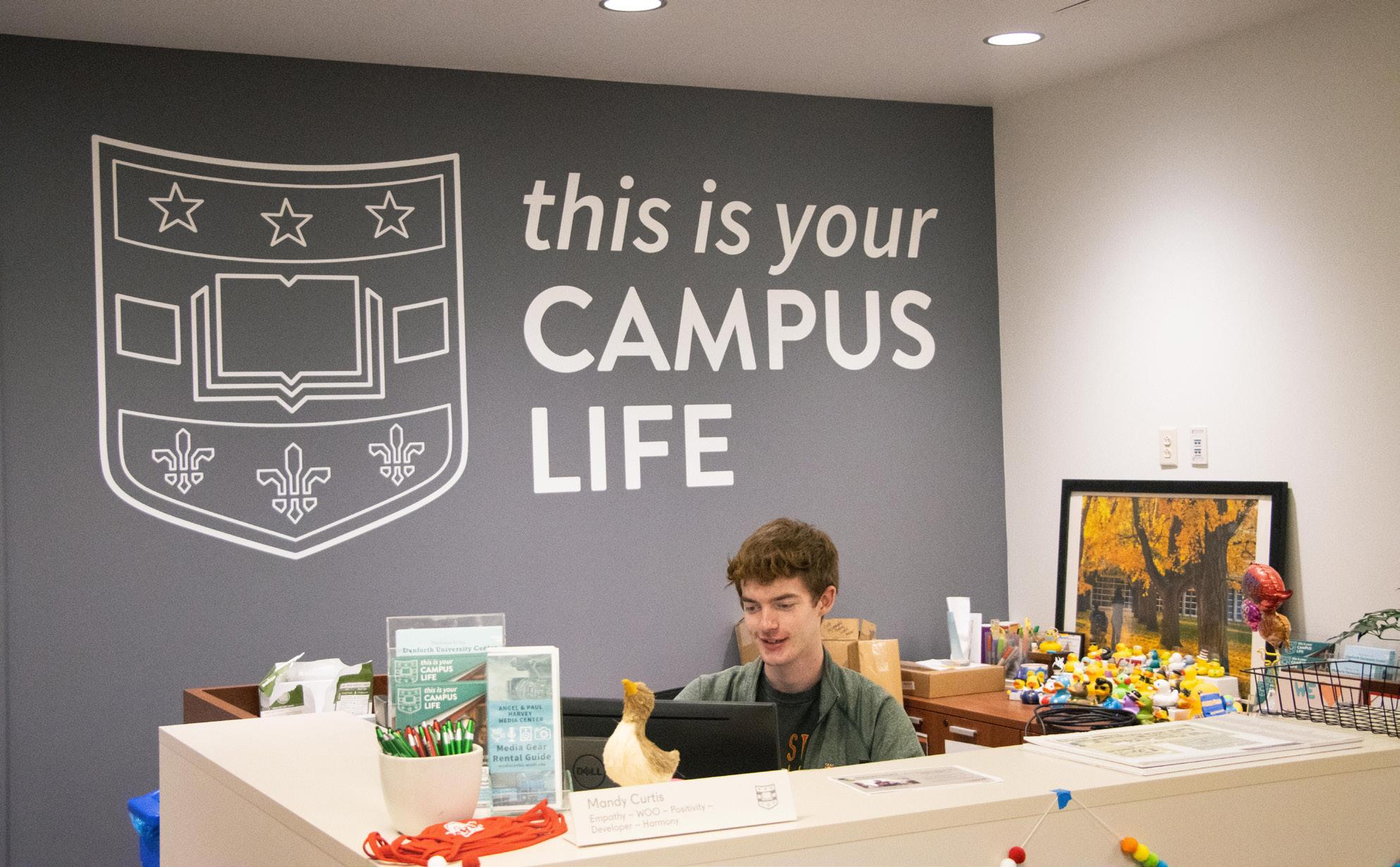
Abby McGowan, who serves as the Outreach Chair for the Washington University College Republicans, explained that their group plans many events far out in advance.
“With a group that is more event-oriented, a lot of what you are doing is planned at the start of the semester or before the semester,” McGowan said. “We already have a lot of insight into what we need to plan, but when we have had to make changes that are more unexpected, Campus Life has been very willing to help with the process.”
Although some groups have been able to resolve issues with the help of Campus Life, others found that they had to find solutions by themselves.
Gorman recounted an experience where APO and another student organization were booked in the same
room at the same time.
“The first day room reservations opened, they actually double-booked us and another group because they had moved both of our reservations,” Gorman said, “then we had to sort out who got the room, it was out of business hours and we both got an email from the same woman saying we should be [in the space].”
Gorman said that in a separate incident, Student Union canceled all of APO’s room reservations without providing reasoning beyond “uncontrollable circumstances” and without offering any replacement spaces.
Burch said that he believes the policy should focus on having a cohesive online platform.
“I think having one place to go to for reservations, appeals, getting approval, rooms, and all of that could be a good starting point,” he said.
While Gorman agrees that this policy change is moving in the right direction, she emphasized that it is still a heavy work in progress.
“I think we’re lucky because I know [Campus Life] well and we’re able to navigate it easier,” Gorman said. “If we didn’t have that connection we’d be out of luck, it’s much harder.”
Claverie also spoke about what he believed Campus Life could do to improve the policy to make it more helpful for student groups in the future.
“In my opinion, something that’s worth understanding is that not every single event has the same type of planning as a big general body meeting,” Claverie said. “I think part of the learning process here is going to be understanding how student groups are planning events and if they want everything to be planned two weeks ahead of time.”
Dining services unveils sustainability initiatives
Dining Services rolled out a handful of initiatives to reduce waste in campus dining locations this year.
The initiatives, which include a new system for returnable dishware and an increased use of plates, were created in collaboration with WashU’s new campus restaurants and food provider, Sodexo.
The primary goal is to reduce waste generated by on-campus dining.
Director for Dining Services Andrew Watling said that the primary area of concern for sustainability in campus dining is to reduce waste generated by the use of to-go boxes.
“Our campus has, for years, used an astronomical number of to-go boxes,” Watling said. “Pre-Covid, during Covid, post-Covid. We just used a ton of them.”
Dining Services
VOLUME 145, NO. 4
partnered with ReusePass this year, a reusable packaging company, to implement to-go boxes.
ReusePass is integrated with GrubHub, which Watling said allows students to easily check out to-go boxes when they order food.
Watling said that
Dining Services has tried to implement returnable to-go boxes in previous years, but the systems were ineffective in reducing waste because students were not accountable for returning boxes.
“Last year we bought like 6,000 [to go] boxes at the start of the semester,”
Watling said. “They were pretty much all gone by October.”
Under the new system, students who do not return their reusable to-go box within two weeks of checking it out will be fined $5.
Watling said he is
hopeful that the simplicity, accessibility, and accountability of reusable to-go boxes will incentivize students to use them and, importantly, to return them.
Assistant Director of the Office of Sustainability, Cassie Hage, said the new system has already made significant strides in sustainability.
“In the first week and a half of a relatively soft roll out, we know that we saved 414 gallons of water and 40 lbs of waste from avoiding just 711 singleuse containers,” Hage said. “That translates into 438 lbs of [greenhouse gas] emissions avoided.”
Hage said that reusable to-go boxes not only reduce waste but could also have indirect benefits on sustainability.
“[Reusable dishware] will simplify our waste stream, which will have the side benefit of reducing
contamination in compost and recycling,” Hage said. A reduction in contamination means that more of the waste we compost and recycle on campus will end up in compost or recycling plants rather than being sent to normal garbage facilities.
In addition to the new system for reusable dishware, Watling said that Dining Services plans to encourage employees and students to use plates more and single-use to-go boxes less, though they will still be present in most dining locations.
Watling said that use of single-use to-go boxes increased because of COVID-19 and that Dining Services has struggled to return to using plates. Campus dining will attempt to make plates the default dishware this year.
“Your food is served on a plate unless you really need to take it to go,”
Watling said. “I think food looks better. It tastes better. There’s no reason that you need it in a to-go box if you’re sitting in [Bear’s Den].”
These sustainability initiatives come at the same time that new restaurants and a new food provider are acclimating to WashU.
“With a new provider and new things on campus, this was a good opportunity for us to make a renewed push for a lot of the things that I think we’ve lost with Covid,” Watling said.
Watling said that sustainability was a consideration in the search for new vendors, but that it was not the primary focus. That being said, sustainability is top of mind for Dining Service’s collaboration with Sodexo.
“The new partnership with Sodexo provided an opportunity for a fresh take,” Hage said.
In particular, the two
teams are working to provide more meals that are not meat-centered.
“One of the big things is trying to make sure that people see that vegetarian, plant-based eating is not just tofu,” Watling said. “There’s a lot of other ways to do it and a lot of good options.”
Despite hope for the new initiatives, Watling and Hage share the sentiment that there remains room for dining services to improve sustainability.
They also agreed that the initiatives will only make campus dining more sustainable if community members actively participate in them.
“I think if we’re serious as a campus about reducing the amount of waste that we have then we have to commit to that,” Watling said. “We’re going to all have to do it.”
© 2023 Washington University Student Media, Inc. (WUSMI). Student Life is a financially and editorially independent, student-run newspaper serving the Washington University community. Our newspaper is a publication of WUSMI and does not necessarily represent the views of the Washington University administration.
Via Poolos Clara Richards Editors-in-Chief editor@studlife.com Avi Holzman Managing News Editor news@studlife.com Annabel Shen Managing Scene Editor scene@studlife.com Reilly Brady Managing Forum Editor forum@studlife.com Hussein Amuri Managing Sports Editor sports@studlife.com Ved Patel Managing Chief of Copy Sydney Tran Head of Design Tuesday Hadden Ryan Davis Heads of Illustration James Ellinghaus Nina Giraldo Senior News Editors Elle Su Zoe Oppenheimer Senior Photo Editors photo@studlife.com Alice Gottesman Senior Scene Editor Mia Burkholder Cathay Poulsen Chiefs of Copy Jared Adelman Managing Multimedia Editor Ian Heft Elias Kokinos Riley Herron Sports Editors Sylvie Richards Jasmine Stone Senior Forum Editors Amelia Raden Jordan Spector Junior Forum Editors Jamie Nicholson Junior Photo Editor Zara Shariff William Labrador Junior Scene Editors Lily Taylor Zach Trabitz Aliana Mediratta Junior News Editors Brooklyn Hollander Samantha Elegant James Surnamer Natalia Jamula Copy Editors Camden Maggard Social Media Editor Tim Mellman Newsletter Editor emailedition@studlife.com Sophie Tao Designer Tony Tong Senior Web Editor Sanchali Pothuru Multimedia Editor Adrienne Levin Coleman General Manager a.coleman@studlife.com
Huff
Sales Manager huffs@studlife.com AVI HOLZMAN | MANAGING NEWS EDITOR | NEWS@STUDLIFE.COM STUDENT LIFE 3 THURSDAY, SEPT 21, 2023 Copyright
Sarah
Advertising
LILY TAYLOR JUNIOR NEWS EDITOR LEWIS RAND NATASHA CHUKA CONTRIBUTING WRITERS
New Campus Life policy changes room bookings
MADDIX CRADLEBAUGH | STUDENT LIFE
A new Campus Life policy requires student groups to register all events on WUGO at least 14 days in advance.
SCENE
Up, up, and away! Balloon glow and race flies high
The Great Forest Park Balloon Glow and Race, an annual city tradition that involves the whole community, serves as a welcoming invitation to fall in St. Louis. Coming from New Mexico — home to the world’s largest balloon festival, the Albuquerque International Balloon Fiesta — I had high expectations. While I might always be biased towards my home state, the Great Forest Park Balloon Glow and Race surprised me. It is a community-orientated event, filled with enthusiasm and good energy that makes way for the St. Louis community to come together each year for something that is both beautiful and widely sentimental to residents.
Observing the event, the sense of connected community was overwhelming. Beyond just balloons, there was vibrant music, dance, and entertainment. Firstyear Erin Wadsworth had commented on his experience afterwards.

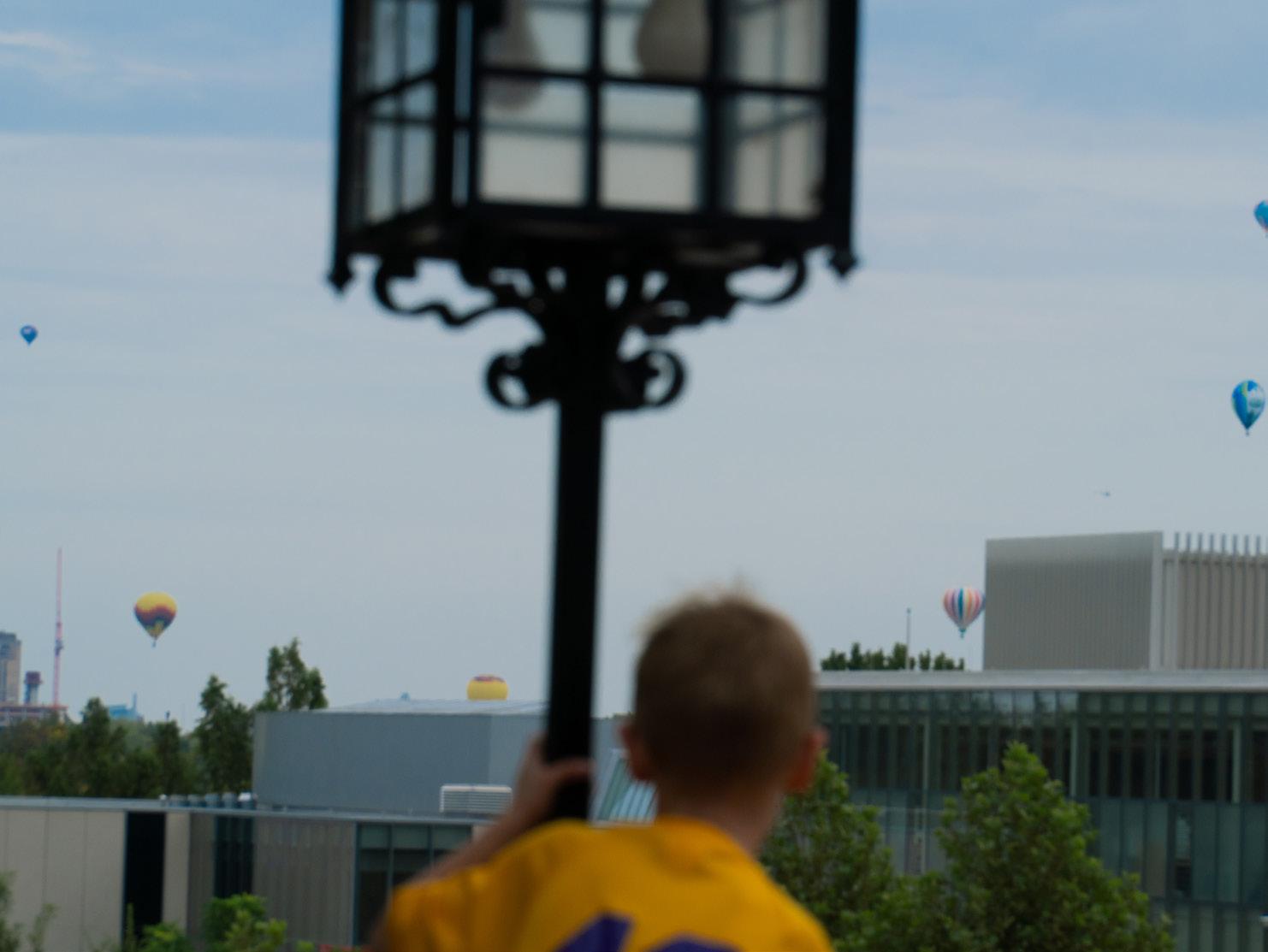
“[My] favorite part about the balloon glow/ race was seeing how it brought the STL community together…the energy and joy of everyone attending made me feel at home in St. Louis and eager to continue branch[ing] out and[exploring] the area,”
Wadsworth said. Looking into its history, the Great Forest Park Balloon Glow was founded in 1973 by balloonists Nikki Caplan and John O’Toole as the “first modern-day balloon race held in St. Louis,” with the event starting as a small race with just a dozen spectators. Over the years, because of leaders John Marlow, Dan Schettler, John Schaumburg, and Ted Staley — the “Fab Four” as they were called — the Balloon Race became a tradition that just kept on growing. It was in 1991 that the Balloon Glow was tacked onto the race, giving way to the elaborate festival that we are familiar with today.
While in line to grab a delicious plant-based hamburger, I had the chance to interview two recent graduates of WashU, Griffin Brown ‘23 and Gaby Musickant ‘23. This year was the first time they both attended since their freshman year. Musickant described the event as a beautiful communityoriented event, saying, “When there’s something that the whole city comes together for, I really appreciate it.” Brown added that his favorite part of the night was seeing “the glowing balloons against the sunset. [It was] so beautiful.”
Throughout the evening, it became clear to me as a first-time visitor that many attendees have made

personally meaningful memories at the Glow, and that year after year, there is a desire to return to the event. Another WashU student, first-year Meghan Jachna, is a St. Louis native who has been returning back to the Balloon Glow for many years.
“[I] love that it brings people from all different parts of the community together,” she said. “I always end up seeing people I know from many years ago, and it is a great way to reconnect. Usually, my entire family and my cousins go together, and it has become a tradition that my family looks forward to every year. Now, it is a tradition that I can continue to be a part of with the WashU community.”
One of the first balloons I saw had the Washington University logo – fitting, considering WashU’s large impact on St. Louis. In a $12,000 sponsorship, the WashU balloon dubbed the “Time Traveler” glowed brightly on Friday night; It carried Dr. Anna Gonzalez, or “Dr. G,” Vice Chancellor for Student Affairs, as well as a lucky student high into the sky on Saturday morning.
While the event holds many different meanings for the attendees, one thing is clear: it is an enduring tradition that has a tremendous impact on the city.

The College Chef’s Handbook: Making bread from scratch in my dorm
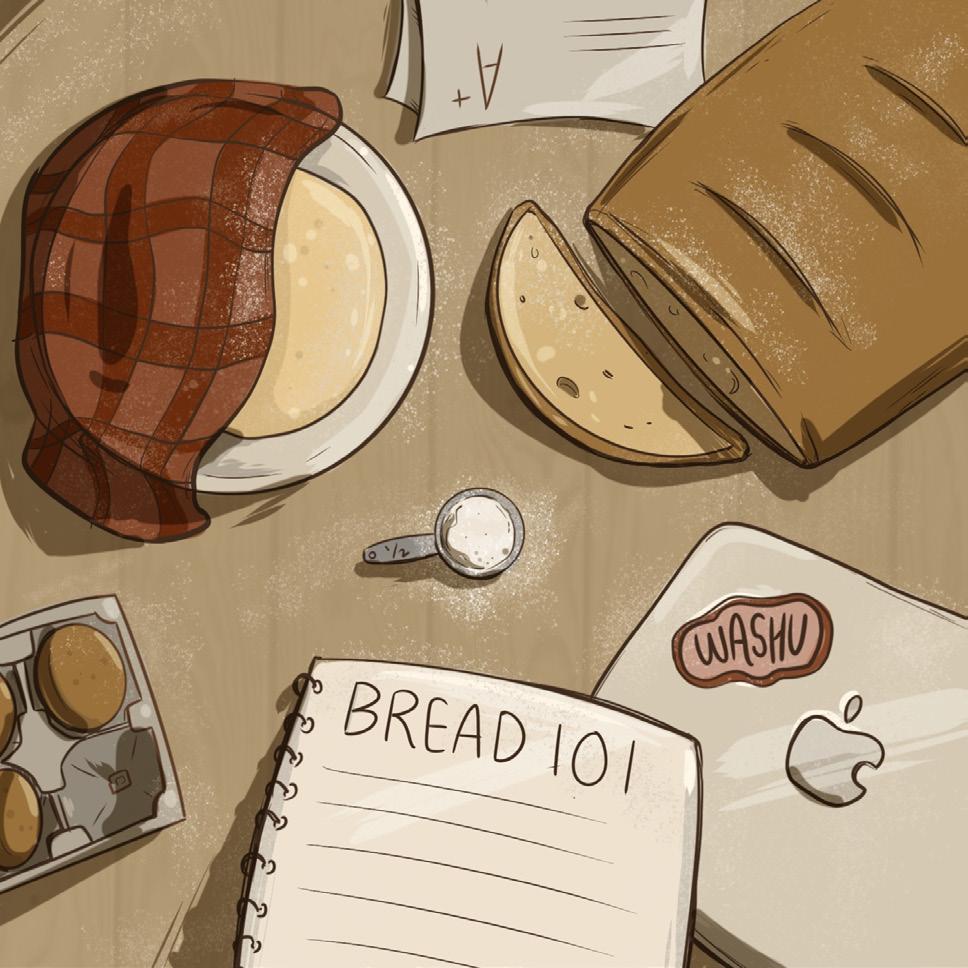
“Let’s go around the room and introduce ourselves with our names, pronouns, and favorite form of bread.”

It was a Tuesday evening of the second week of school – the end of the first real day after syllabus week. The post-Labor Day shock of work and responsibilities was hitting me as I found myself in the StudLife Scene meeting’s icebreaker circle.
“Wait, can someone do a ‘Making bread in the dorm’ article?”
My eyes lit up. If anyone’s going to document making a complex recipe in their dorm kitchen with little to no equipment, it’s going to be me.
Last year, as a freshman, I put my selftaught cooking skills to the test. I experimented with everything from Paws and Go ingredients to baking a Kouign-Amann (a pastry made of layers of caramelized butter, sugar, and dough) for
my French cooking class. Especially after returning from studying abroad in France this past May, a slice of freshly baked bread with butter and flaky sea salt was the product of my many summer cooking adventures. Now, after the chaos of move-in, the monotony of syllabus week, and with a pile of Organic Chemistry problems sitting on my desk, I thought, “What better excuse to do so than to make some bread at 4 o’clock on a random Saturday afternoon?”
Inspired by the “favorite form of bread” icebreaker, I made the trip to Schnucks for some bread-making essentials — flour and yeast. With those ingredients on hand, all that is left is a little bit of water, salt, and oil, making for a deceptively, simple recipe. I say deceptively simple because the process of making bread is a long one, consisting of the phases of agitating, kneading, rising, and then finally, baking. So, with
my recipe scrawled out on a piece of loose-leaf paper, I got to work.
The recipe I used is one I have made so many times I’ve memorized it as a ratio: 1 cup of water, 1 packet of yeast, and approximately 3 cups of flour. I started by placing one cup of the flour into a bowl with the packet of yeast. I also added a pinch of sugar – a helpful addition to ensure that the yeast rises. The key to good bread is the temperature of the water: It has to be as close to 120 degrees Fahrenheit as possible. Once the water was the right temperature, I added it to the bowl with the starting mixture and immediately began to stir.
At this point, the challenge was agitating the yeast without any electric equipment. Usually, yeast agitation is best done by an electric mixer, however, I set my phone timer and painstakingly mixed the base by hand for five minutes. Now, the ratio is “approximately” 3 cups of flour because a different amount will incorporate itself into the forming dough each time. My way of ensuring the right amount of flour is by adding one more cup of flour to the base after agitation, folding the mixture until it is too sticky to be stirred anymore.
Read the rest online:
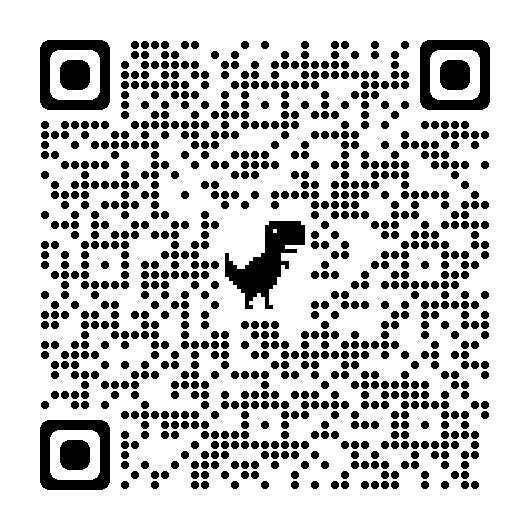
ANNABEL SHEN | MANAGING SCENE EDITOR | SCENE@STUDLIFE.COM 4 STUDENT LIFE THURSDAY, SEPT 21, 2023
WILLIAM WEINSTEIN CONTRIBUTING WRITER
ELIZABETH GRIEVE STAFF WRITER
ALAN ZHOU AND SAM POWERS | STUDENT LIFE
ALAN ZHOU AND SAM POWERS | STUDENT LIFE
Balloons take to the sky in the 51st Annual Great Forest Park Balloon Race.
The WashU Balloon “Time Traveller” lands on the East End of the Danforth Campus.
ILLUSTRATION BY JAIME HEBEL
WOMEN’S SOCCER from page 1
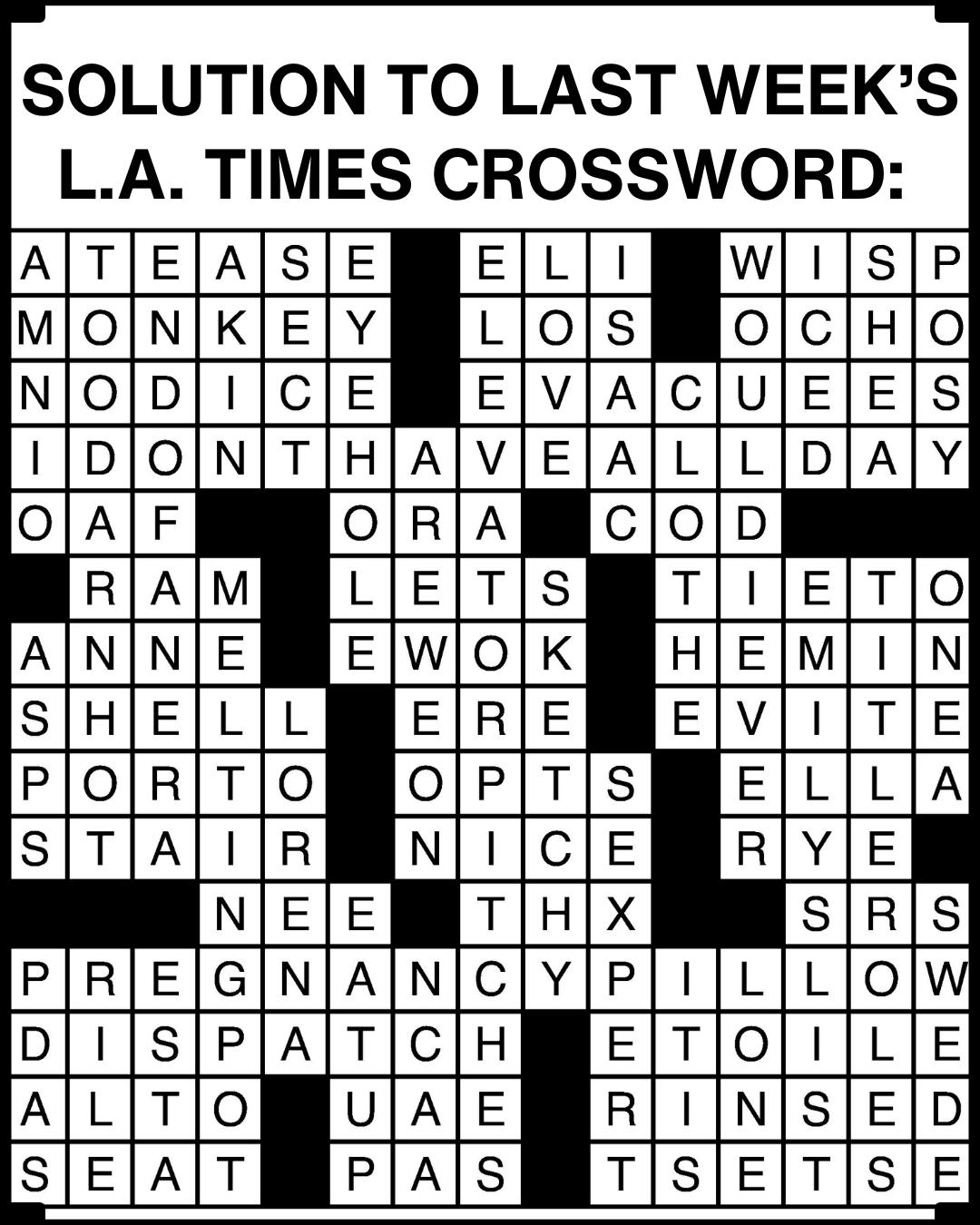
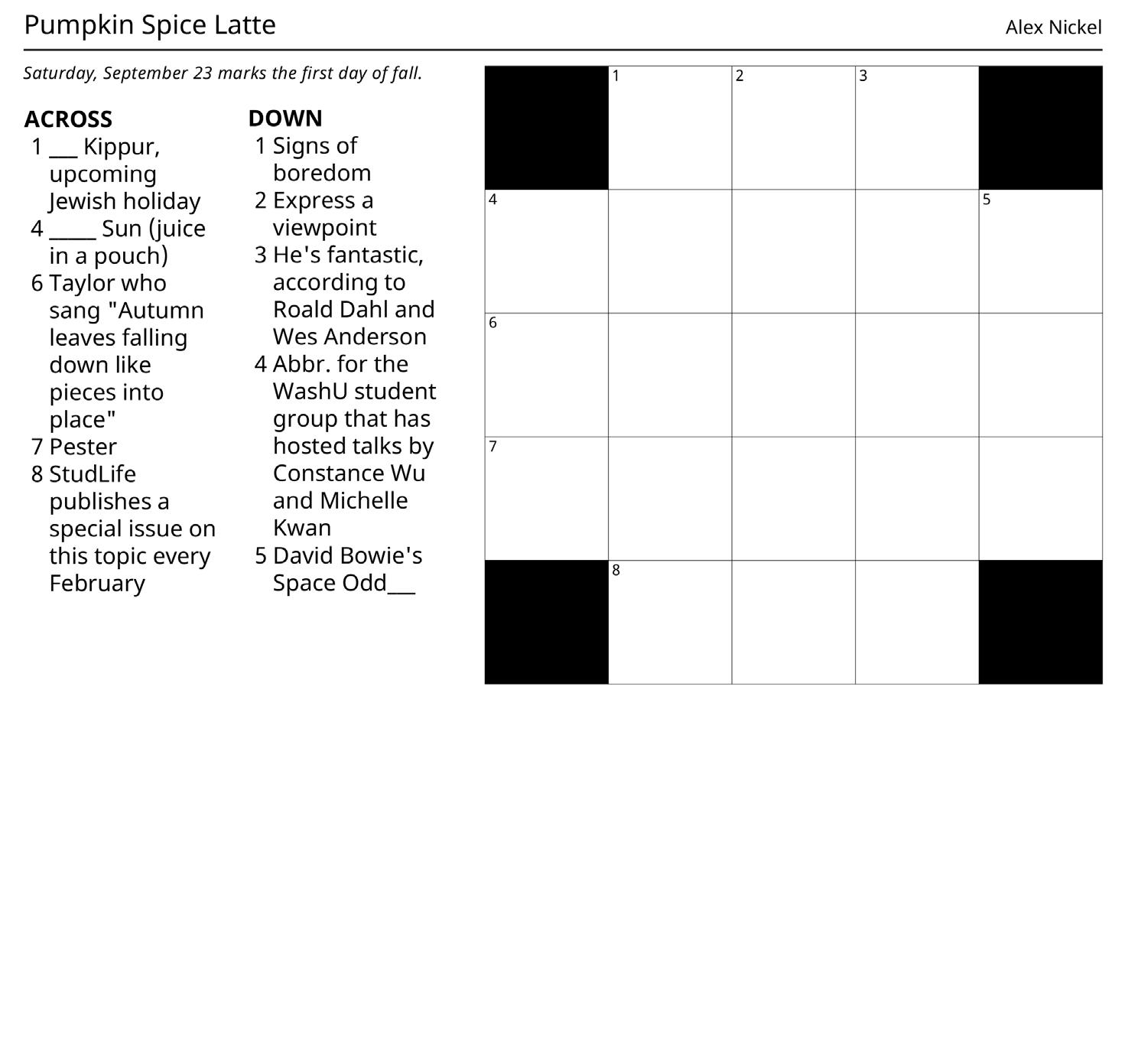
WashU vs. DePauw University
On Friday, Sept. 15th, WashU women’s soccer cruised to a comfortable 4-0 victory against DePauw University.
From the first whistle, the Bears dominated the game both defensively and offensively. The team recorded 17 shots in the game — 13 of them coming from the second half — compared to DePauw’s 3 shots total.
“I think the defense starts with our forwards and everyone being on the same page from a team defense standpoint,” Coach Conlon said. “Then when our backline is getting in one v one, isolated situations, they’re doing a good job of handling it because they are keeping us organized in the back.”
With great control of the game, the Bears’ positive start was rewarded with a goal in the 21st minute of the game. Junior midfielder Gaelen Clayton found herself in a goal shuffle inside the penalty box, surrounded by white and dark-blue shirts alike. But with determination, the junior applied enough pressure to bypass the DePauw defense, giving her team a welldeserved 1-0 lead.
The Bears continued to dominate the game. The constant pressure on DePauw wouldn’t be rewarded until two minutes before the conclusion of the
first half, when the Bears were awarded a penalty kick. Greven stepped up to take the penalty.
The Bears would go on to score two more goals in the second half thanks to a counter-attack, breakaway goal by sophomore midfielder Grace Ehlert in the 58th minute as well as the first career goal for firstyear Alexandra Weinmeister in the 75th minute.
WashU vs. Rhodes College
“I think the first half we came out a little slow, then played to our standards,” said junior Meryl Mckenna.
“But then I think in the second half, we came out strong, we were able to [play to our standards].”
On Sunday, the Bears faced Rhodes College. In a contentious game, the first half was overshadowed by several slide tackles and collisions that brought great entertainment to the common viewer, but not to several parents watching who expressed their concerns and displeasure to the referee.
“Hey ref, what was that?” one parent shouted after a WashU player was brought down by a challenge.
But as the game resumed in the second half, the Bears brought their own intensity and energy to the match.
“[Coach Conlon]... reminded us [at halftime that] this is our field; we can defend it,” Mckenna said. “We played our standards,
PUZZLE PUZZLE Mania

Women’s soccer receives three D1 transfer students
moved the ball our way — and then there’s obviously a lot of tactical elements that went into it, but that was the main message.”
The Bears’ intensity was rewarded when in the second half, a shot toward Rhodes’ goal hit one of its defenders in the penalty box, rewarding WashU with a penalty. Like the previous game against DePauw, Greven calmly stepped up to the plate, slotting the ball away for a much deserved 1-0 lead.
But the team was not done just yet. In more ways than one, that penalty goal opened a rain of goals that saw the women’s team cruise to yet another victory.
Specifically, in the 61st minute of the game, graduate student Samantha McKibben found herself in the penalty box. Scrambling to try and place the ball home, McKibben managed to direct the ball past a Rhodes player with enough pressure, giving WashU its second goal of the afternoon.
As has been the case all season, you couldn’t talk about the Bears’ Sunday win without mentioning the defensive catalyst that has proven to be a nightmare for opponents. For McKenna and Conlon, this defense begins with their goalkeeper and the entire defensive backline, which has supplied much needed leadership to keep everyone up front organized.
“I think in the second half, we decided to hold the ball a little bit and create
numbers around the ball and a good technical ability which turned into goals,” Conlon said. “But it all starts with keeping the ball in the back three [defenders].”
“There’s a lot of communication said obviously from the back organizing us,” McKenna added. “We pressed together, shifted together, [and] all of that starts with Sid and then carries up. But we were all on the same page and that really helps.”
The Bears’ systematic approach to the game proved beneficial, as the team would go on to score two more goals into Rhodes College’s net in the 71st and 89th minute .
The team will play a home contest against RoseHulman University on Friday night to finish off the Bears’ non-conference play. They then welcome Emory University next month — a team who beat the Bears 3-0 last year and will likely be their toughest opponent so far. The University Athletic Association (UAA) is known to be one of the toughest conferences in NCAA DIII.
“I think earlier in the year, I think every UAA team is gonna be really good and prepared for each other,” he said. “We got another two weeks and that’s a long time and a short season. So I think we’ll get a lot more preparation. I think our UAA opponents have a lot more preparation and everyone will be ready come October.”
SPONSORED BY:
 ELAHEH KHAZI CONTRIBUTING WRITER
ELAHEH KHAZI CONTRIBUTING WRITER

Last spring, talks for new transfers for the Washington University women’s soccer team began. With three new transfer players from D1 schools, the Bears team is hopeful for a great upcoming season and hopes to reach nationals with the addition of these graduate athletes.

The process to get transfer athletes is often unpredictable as during the transfer period, the soccer team’s coaches and WashU’s admission office must settle with not only the best athletes but also
those who are a good fit for the school academically. “The transfer portal is something very new with the NCAA that we don’t see that often,” says Coach Conlon, head coach of the women’s soccer team. However, due to the COVID-19 pandemic, many graduate students have been looking to these transfer periods for an extra year of eligibility to play for college soccer teams.
During the transfer process, many considerations must be made for players to be eligible to transfer to new institutions. Specifically,
HUSSEIN AMURI | MANAGING SPORTS EDITOR | SPORTS@STUDLIFE.COM STUDENT LIFE 5 THURSDAY, SEPT 21, 2023
SPORTS
BRI NITSBERG | STUDENT LIFE
Madeline Allburn races down the field in a game against Carroll University on September 8th.
SEE TRANSFER, PAGE 6
TRANSFERS from page 5
the new school’s Dean has to approve the decision. As the transfer period does not necessarily overlap with recruiting windows, the school must approve of these players before they can be considered for the team. For the three new D1 transfers for the women’s
soccer team, Ally Hackett, Madeline Allburn, and Sam McKibben each had a unique transfer process. All three applied for different windows for the MBA degree from the Olin School of Business. One of the most important was the transfers and other team members’ chemistry. In
soccer, as in many other sports, a vital part of the team’s success is how well players get along. Coach Conlon said he thinks “these three women are good people, great students, and can positively contribute [to the whole team’s success].”
The three players met
All-American Sam Buckley talks building off a thunderous volleyball freshman season
allowed you to have such an incredible first year?
with the team a few months ago for a trial run of how the group would work with new members. Due to them getting along well with the team, Coach Conlon is confident they will succeed this season. The team’s goals this season are to not only protect WashU’s home turf, Francis Field, but also to
Men’s
While freshman college athletes sparsely play their first year, Sam Buckley isn’t like most. Last year for the women’s volleyball team, Buckley was named All-UAA First Team and UAA Rookie of the Year. She also helped power the team to a 30-6 record and second round appearance in the NCAA tournament. Now in her second year, Buckley helped lead WashU as they swept the competition in the East to West Battle, which included defeating the #2 and #7 ranked Division III teams.
During this tournament, she led the team in assists in two games and picked up a double-double (double-digit assists and digs) in the other match. This performance earned her UAA Conference Athlete of the Week. Student Life sat down with Buckley to learn more about the young but accomplished career she has had so far at WashU, as well as who she is off the court. This interview was edited for length and clarity.
Student Life: You are coming off a very impressive freshman year, where you were named on the All-UAA First Team and were UAA Rookie of the Year. What do you believe you did that
Sam Buckley: I was very humbled to be named to all these awards last season. My teammates would constantly push each other to get 1% better every practice, and that really helped motivate me. We had amazing senior and super-senior leaders, and I tried to mimic the confidence they had on the court. I would not be able to set our hitters up in a good spot if it weren’t for the great passes I received last year.
SL: What makes you most excited about this year’s team?
SB: The team has a super fun personality on and off the court, and I’m always laughing around them. We have a challenging schedule this year, and I’m excited to handle adversity together with them.
SL: With 8 new freshmen joining the program, what has your role as one of the leaders been to help these new faces feel comfortable with the team?
SB: Our team is a family, so we treat everyone with the same amount of respect no matter their age. The whole team supports the freshmen whether during practices
or if it’s just hanging out at the DUC, since we all know how hard the transition is to college.
SL: What is your favorite memory as a member of the volleyball team?
SB: Definitely making the NCAA tournament last year. The whole team was sitting together and it was a really electric moment for all of us.
SL: How did you end up at WashU?
SB: Similar to many other student-athletes here, I sought out exceptional education and playing the sport I love at a high level.
SL: Favorite meal you have had at WashU?
SB: The wraps from Law Cafe.
SL: Favorite class/favorite teacher?
SB: Calc II with Professor Schaefer.
SL: Volleyball player you love to watch?
SB: Any of the top tier setters: Lauren Carlini, Sydney Hilley, Jhenna Gabriel, Kami Miner.
win the conference championships to qualify for nationals.
With the addition of these three new D1 transfers, the team hopes to improve on playing different positions and roles.
Coach Conlon hopes to maximize the team’s potential through improved
collaboration and connection this season. “We’ve got a lot of incredible students [and student athletes] at this university, and I don’t think they show up just to be average. [Our players] show up to be great.”
soccer defeated by Millikin, falls to 2-3-1 on the season
Millikin University proved too difficult for the Washington University men’s soccer team on Saturday, as the Bears fell 2 goals to 1 in a hard-fought away contest. The loss marked the team’s second out of five games so far this season, highlighting the challenges it has faced to start the year.

The first half was tightly contested, with both teams notching five shots each. The Bears took their first one in the 16th minute when a solid attacking play opened up a chance for senior Owen Culver. He managed to curl a powerful shot around the Millikin goalkeeper, but it stretched wide. In the 23rd minute, the Bears had another chance. Junior Joseph Hipskind’s pass deflected off a Millikin defender and rolled to the top of the 18-yard box. Senior John Daniels was perfectly positioned to deliver a powerful strike past the goalkeeper, notching his third goal of the season.
However, it didn’t take long for Millikin to net their first goal. 4 minutes later, they tied the match on a well-placed through ball. The two sides traded
shots back and forth for the next 20 minutes, before the Bears committed a foul in their 18-yard box, awarding Millikin a penalty. Millikin converted the penalty to take a 2-1 lead heading into the second half.
The Bears tallied 8 shots in the second half in a display of consistent offensive pressure, but ultimately failed to equalize. The loss dropped the Bears to a 2-3-1 record.
Coach Joe Clarke recognized that the team has room to develop. “We need to continue to improve on our final pass and our
runs in the attacking penalty area.” Clarke also had some positive words for goalscorer John Daniel’s performance. “He is much healthier and playing closer to the amazing player he is.” Daniels, coming off a hamstring injury that limited him in 2022, was a key part of the team’s 2021 season.
The Bears look to earn their first home win this year on Wednesday, Sept. 20th, when they will take on No. 25 North Park University. Kick-off is slated for 2 p.m. CST.
Crushing performance in Illinois establishes first conference win for WashU football
In the second game of the season, the Washington University football team dominated their first conference game with a 63-13 win against Millikin University. With the win, the team now boasts a 2-0 record to start the season. This game was dominated by WashU, much like the last two years have been, and gives the Bears a 4-1 record against Millikin in their five matchups.
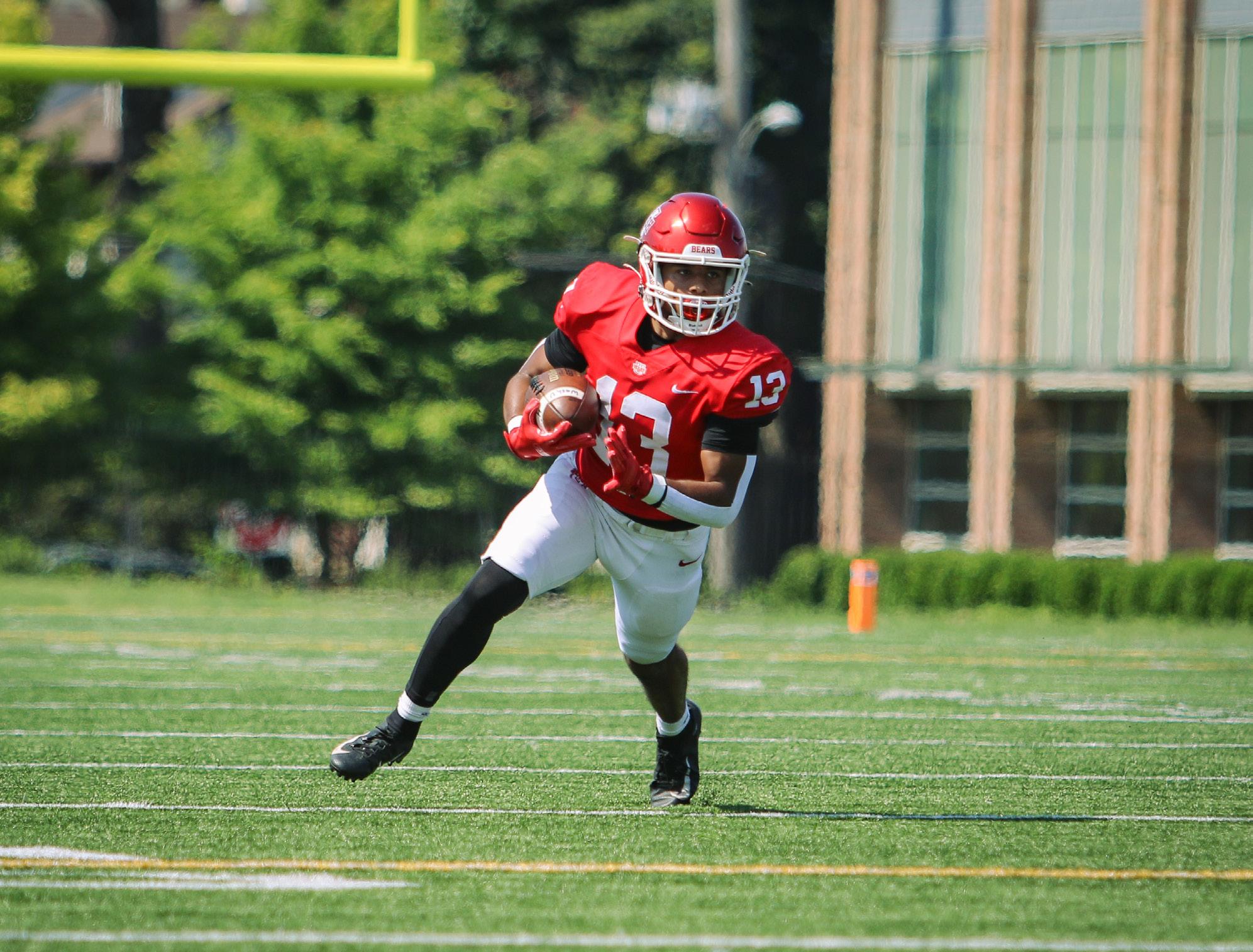
The first quarter was relatively slow in the production of points. On the first drive of the game, Millikin slowly made their way to the 42-yard line, but then had to punt the ball to the Bears. The Bears received the ball and immediately got to work going down the field. They worked up the field to a first down on the 45-yard line. The Bears got two first downs with a connection for 12 yards, and then an amazing rush for 21 yards to get to the 12-yard line. After getting to the 12-yard line, the Bears dwindled down the defense until Levi Moore, a first-year, ran the ball into the endzone. After the good kick attempt by freshman kicker Ross Muchnick, the score was 7-0.
The Bears’ defense got the job done on the next drive, keeping Millikin back. Eventually, with 20 seconds left in the quarter, the defense forced a fumble, which graduate student linebacker Matthew Schmal recovered at the 12-yard line.
Going into the 2nd
quarter, the Bears were able to score a lot more points. After a few short plays, WashU graduate student quarterback Matt Rush connected with junior wide receiver Collin Goldberg for a touchdown to go up 14-0. The defense was again able to lock down Millikin and forced them to punt. Starting with the ball on their 27-yard line, sophomore running back Fred Ware exploded with a 73-yard touchdown to put the Bears up 21-0. Once again, WashU’s defense dominated Millikin, forcing them to punt. The
Bears then received the ball and quickly marched their way up the field until junior running back Kenvorris Campbell rushed for another touchdown. After another successful extra point, the Bears were up 28-0. WashU’s defense held for the remainder of the second quarter, and the first half came to a close with the Bears leading 28-0.
Starting the second half, all the momentum was with the Bears, and the offense continued to dismantle the Millikin defense. Starting on WashU’s 40-yard line, the
Bears made their way up the field until they made it to the 10-yard line. At the 10-yard line, the ball was fumbled, but it was recovered by Levi Moore, who proceeded to score his second touchdown of the game. After a successful extra point by Muchnick, the game was at an astounding 35-0. The Bears let up their first points on the next drive though, as Millikin proceeded to make their way up the field. They completed a 40 yard pass to the 1 yard line, where they would eventually make their way into the
endzone for their first points, leaving the score 35-6. The third quarter saw fewer points as both teams had fruitless drives until WashU eventually scored again. The Bears methodically made their way up the field until Rush was able to connect with Golberg again for another touchdown, making the score 42-6 after yet another successful kick by Muchnick. The quarter was not over however, and Millikin would put more points on the board. Millikin made their way up the field until they managed to connect for a
54-yard pass for a touchdown, and following a successful extra point, the game was 42-13 as the 3rd quarter came to a close.
Starting the 4th quarter, the Bears responded with more points. A 46-yard pass to freshman wide receiver Makael Carter gave the firstyear receiver his first career touchdown, and after another successful extra point, the score was 49-13. Millikin would respond by marching up the field, but they soon found misfortune, as senior defensive back Enzo Redina intercepted one of their passes and ran it 37 yards — all the way to the 11-yard line — putting the ball back in the Bears’ hands. The Bears connected for yet another touchdown, making the score 56-13. WashU’s defense continued doing what they had done all day, and they forced yet another fumble by Millikin at the 18-yard line, which was recovered by sophomore linebacker Brady Willmer. Junior quarterback Connor Dechiro, the backup quarterback for the Bears, hit junior wide receiver Taidhgin Trost for the final touchdown of the day, which — with another successful extra point — would leave a final score of 63-13.
After an incredible performance like this, it is hard to think that the Bears are going into the next week with anything other than confidence. Their confidence will be put to the test when they face Carthage College on Saturday, Sept. 23 at 1 p.m. in the home opener.
HUSSEIN AMURI | MANAGING SPORTS EDITOR | SPORTS@STUDLIFE.COM 6 STUDENT LIFE THURSDAY, SEPT 21, 2023
ARYAN KUMAR CONTRIBUTING WRITER
ARAM ASHRAFZADEH CONTRIBUTING WRITER
BEN DENKER CONTRIBUTING WRITER
BRI NITSBERG | STUDENT LIFE
Forward Christopher Alwang crosses a ball into the box in a game against North Park University on September 20th.
CLARA RICHARDS | STUDENT LIFE
Junior Kenneth Hamilton ran for 135 yards against Millikin University on September 16th.
FORUM
COVID-19 surge: We need free testing and clearer guidelines
In the first weeks of classes, the new COVID-19 Omicron variant EG.5 has spread rapidly through the WashU community. The Habif Health and Wellness Center reported 238 cases as of Sept. 14, which includes only the positive results that students have reported to Habif.
As cases have increased, students have felt unclear about what they should do if they experience symptoms, test positive, or are exposed to someone who is positive. As students experience confusion surrounding this COVID-19 surge, they are also facing physical
and mental impacts. This situation demands a more coordinated response than what the WashU administration has given thus far.
According to their isolation protocols, Habif says that if you experience any symptoms, you should get tested. However, Habif recently began charging for at-home COVID tests ($20 for two tests), which were previously free. While we firmly agree that students should test if they have symptoms, WashU should not expect students to pay $20 dollars out-of-pocket to do so. The cost of testing disincentivizes students
from testing themselves for COVID-19, increasing the spread of the illness and negative health effects in the community. WashU needs to respond accordingly and reinstate free take-home COVID tests for students.
Other universities still offer students free COVID19 rapid tests, including Johns Hopkins University, Rice University, and Yale University.
In addition to free testing, the University needs to outwardly acknowledge and discuss its response to the COVID-19 surge. The increase in cases is negatively affecting many
students who are exposed to COVID-19 or who test positive, as the stress of missing classes or getting sick is overwhelming. However, the administration has failed to make a public statement about these impacts or how they are advising students and faculty to handle them.
In terms of students, WashU should send out a notice restating and reinforcing protocols for students who are experiencing symptoms, facing exposure, and testing positive. While students can review these protocols on the Habif Isolation Protocols page,
they may be overwhelmed with an influx of varying information from fellow students and their professors, or be worried that testing positive will negatively affect their academics and therefore not test or go to class anyway. An email outlining clear procedures for students to follow would help streamline how students respond to sickness and decrease the onslaught of different information that people are hearing and the corresponding stress that they are feeling.
WashU has also left professors feeling unclear about how they should respond to
cases in their classes, which has led to varying responses from them. While some are providing virtual or asynchronous options, others are doing little to help students catch up. An increase in communication to teachers about how to accommodate students who test positive would not only help alleviate professors’ confusion and stress surrounding a sharp increase in absences in their classes, but would also help students who may be worried that they will fall behind if they isolate themselves for the allotted five days.
Your summer doesn’t have to be groundbreaking
SYLVIE RICHARDS SENIOR FORUM EDITOR
“What did you do this summer?”
The question drums around in my mind like a bongo. It comes to me when I’m walking to campus and I run into that person who I spoke to five times in class last semester, or when I’m in my first meeting for a club, or — God forbid — when I’m doing an icebreaker (I really don’t like icebreakers). It reverberates in my dreams, haunting me — What will I say this time? Will I tell one of my rehearsed anecdotes?
Or will I tell the truth, that I spent months either at work (at a spice shop or children’s clothing store depending on the day, if you must know), in my bed, or with a friend who wasn’t on vacation during that given week? No, I probably
DION HINES CONTRIBUTING WRITER
To make this article easier for me to write and for you to read, I’ll cut to the chase: I am a very irritable person. I often feel slighted by the smallest of inconveniences, which causes me to have such strong, negative emotions about many things. Because most of my grievances are irrelevant and would be physically and/or emotionally taxing for society to fix, I am not writing this article as a means to propose a solution or even raise awareness. Rather, I am writing to speak for the college students who are simply annoyed. Oh, yeah. I also just like to rant.
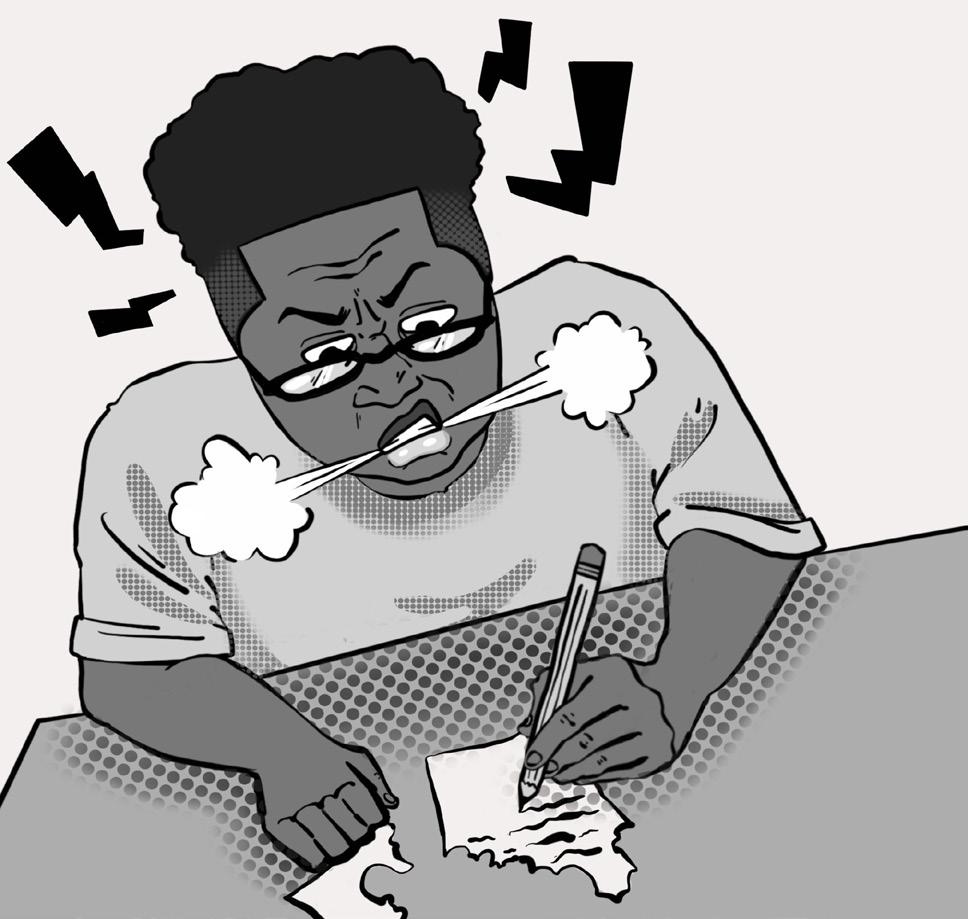
Small talk
There is no reason for you to ask me which dorm I live in, what my prospective major is, and what my family lineage is just to fill an awkward silence.
will not.
It is with great pleasure that I tell you we are almost out of the “what did you do this summer?” period. There may be a short “what did you do over Fall Break?”, slightly longer one for Thanksgiving Break, and an even longer period surrounding Winter Break, but they do not match up to the summer questioning season. Because, unlike these shorter breaks in between classes or fall and spring semesters, summer is four months, so you had to have done something worthwhile, right?
Some of this rant is highly hypocritical and maybe an ounce or two hyperbolic because, I admit, I do actually wonder what people do over the summer. However, on the receiving end of this question, I feel the need to have done something life-changing,
fascinating, or worst of all, fruitful for my future.
When did summer stop being about taking a break from classes and work? I think it’s one of those things that come with getting older, the things that slowly suck the life and fun out of you, until you are a pawn in a never-ending work-eat-sleep cycle of terror, like how can you no longer enjoy a birthday without an existential crisis or do anything without having to pay for it? Anyway, I’m losing my point here. The way people talk about summer at WashU — although coming from genuine interest, kindness, or, sometimes, an obligation to engage in small talk — feels loaded with expectations. If you were not on a study abroad program, learning about architecture in Italy or
marine biology in Australia, then you must have been doing research in a lab, or an internship in Congress or at a highbrow company.
Basically, if you were not spending the summer doing something that grows your resume or your airline miles, what were you doing?
These expectations may be self-imposed; I have never had anyone actually accuse my summer activities of being inadequate. But the conversations around summer, including what you did or what you are planning to do, fortify expectations that, even if someone wants to reach them, aren’t attainable for a lot of people.
Just because someone does not do research or an internship doesn’t mean they didn’t try or weren’t qualified enough to get in. A large number
of internships are unpaid, especially for undergraduate students. According to a 2021 study of over 12,000 students by the University of Wisconsin–Madison, about 40% of internships for college students are unpaid and PBS reported that 47% of interns were not paid in 2022. Not only are nearly half of internships unpaid, but the paid ones are often more competitive, with fewer people accepted, since college students want to be paid and companies don’t want to pay more interns than they need to.
Although internships are great for a college student’s resume and work experience, with many (over half, according to the National Association of Colleges and Employers) even leading to a full-time position, many cannot afford to spend their
The sentiments of a buzzkill
Next thing I know, you’re going to be asking me my mother’s maiden name and my elementary school’s mascot. Also, we both know that you don’t care about any response that may come out of my mouth and vice versa.
Basing one’s personality on insignificant traits
History has proven that humanity is brilliant. We invented pasteurization, artificial intelligence, and Tostitos cheese. We conceptualized art that molds entire generations. With that being said, a person is so much more than one specific trait or ideology, and no one should limit themselves to a singular aspect. Your personality is a complex, beautiful thing that should be displayed in its full capacity. No one cares that you listen to Korn or Slipknot. No one cares that you smoke. No one cares that you’re an atheist. Who isn’t these days?
OUR VOICE: EDITORIAL BOARD
Duos/groups walking horizontally on sidewalks
There is no one important enough to take up the entire sidewalk. Jesus Christ of Nazareth could be walking in the middle of the paved sidewalk during his second coming, and I would still expect him to leave enough room for other people to pass him. But I wouldn’t even have to worry about that because he’s literally Jesus Christ.
Announcing controversial opinions unprovoked
No one asked whether or not you think Beyoncé is overrated. No one asked whether or not you think “The Office” is funny. No one asked about your political ideologies. I can only assume that you cursed the world with this unsolicited information out of some act of terrorism rooted in psychopathy. Furthermore,
there is an ancient practice established during the Paleolithic era modernly known as reading the room, and it is so disheartening to know that this practice has been lost in the wrinkles of time.
Motivational speakers / Life coaches
As a society and a culture, we have accepted that many things we do on a daily basis are devoid of intrinsic meaning, and — by extension — our lives can appear bleak and meaningless. For this reason, the thing that a lot of people need is some spurt of motivation. The way to address this need is not to become a motivational speaker or life coach. If you really want to help people, become a social worker or a drag queen.
People with stan accounts For the love of God, get a hobby.
YOUR VOICE:
summers pursuing an unpaid one. This predicament is especially true for those who are paying for tuition, for food, and/or for housing. The summer offers a prime opportunity to save money for the school year (when there is far less time to work). Additionally, if someone does get a paid internship, you can hardly assume that an intern’s salary will pay for their living expenses.
So even if someone wants to do an internship over the
Read the rest online:
ILLUSTRATION BY DION HINES
Spur of the moment secondary and tertiary locations during hangouts
If we go anywhere that was not previously addressed during the planning stage of the hangout, you are kidnapping me. I am a victim. I do not deserve to be held hostage. Please, just let me go home.
Despite my rants, I don’t believe that the point of
living is to silence or diminish oneself. It would be unreasonable for me to suggest that anyone should make themselves smaller for the sake of being more sufferable. I also wouldn’t do that crap for anyone else. Rather, I think life would be easier for everyone if people were just more considerate. Don’t do everything for the convenience of others, of course, but also don’t live only for yourself. Just think of others, y’all. I don’t know.
any submission as a letter or opinion submission. Any submission chosen for publication does not necessarily reflect the opinions of Student Life, nor does publication mean Student Life supports said submission.
verification. We reserve the right to print

REILLY BRADY | MANAGING FORUM EDITOR | FORUM@STUDLIFE.COM STUDENT LIFE 7 THURSDAY, SEPT 21, 2023
STAFF EDITORIAL Staff editorials reflect the opinion of a majority of editorial board members. The editorial board operates independently of our newsroom and includes members of the junior and senior staff. Managing Forum Editor: Reilly Brady Senior Forum Editor: Sylvie Richards Junior Forum Editor: Amelia Raden Managing chief of copy: Ved Patel Chief of Copy: Cathay Poulsen Editor-in-Chief: Clara Richards Editor-in-Chief: Via Poolos We welcome letters to the editor and opinion submissions (or op-eds) from our readers. Submissions may be sent to forum@studlife.com and must include the writer’s name and email for
You’re not a woman in STEM, and that’s OK
When my parents’ friends used to ask me what I wanted to study in college, I always said “I don’t know — but not science or math.” When I came to WashU, I came to the shocking realization that a lot of people did want to study Science, Technology, Engineering, and Math (STEM).

If you’re like me, and you’re not really into STEM, here’s what not to do.
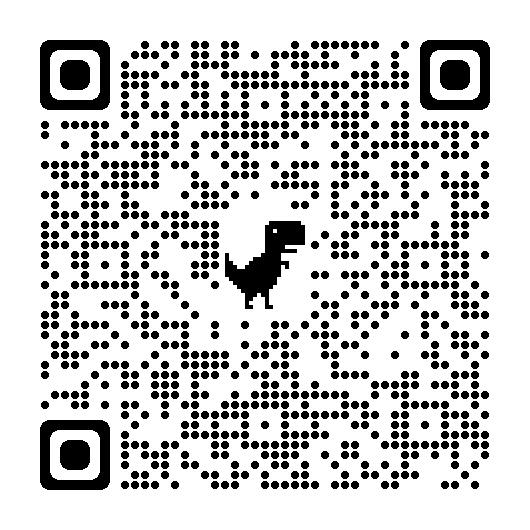
Like anyone who wants to study humanities, I get asked: “What are you going to do with that major, though?”; “If you study history, your options are… historian?”; and “Why don’t you add a CS [computer science] minor or something?”
I wish I could say that I didn’t listen to these people and that I continued to study the humanities with confidence and passion. But that would be a lie.
Last year, I registered for a slate of courses in the humanities and the social sciences. I was excited for these classes, until I started to question where they were taking me.
How would a class about a niche social justice topic apply to a job in the real world? I’d always heard that a STEM degree was more prestigious than a humanities
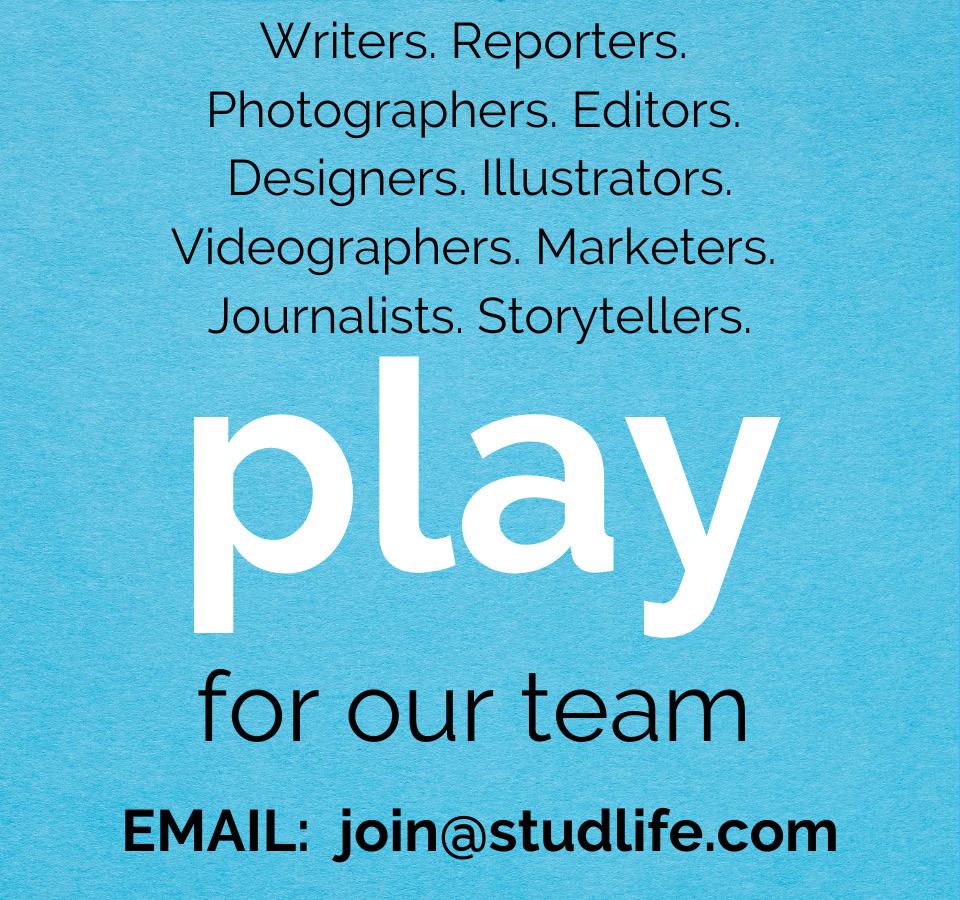
one, so would I even have a job after I graduated?
I also saw people in STEM majors taking a prescribed sequence of courses and envied the structure. Humanities majors often leave a lot of room for freedom in schedules, which is great, but it’s also intimidating when it comes to decision time.
I didn’t know exactly what I wanted to study, so having as little decision-making as possible was ideal.
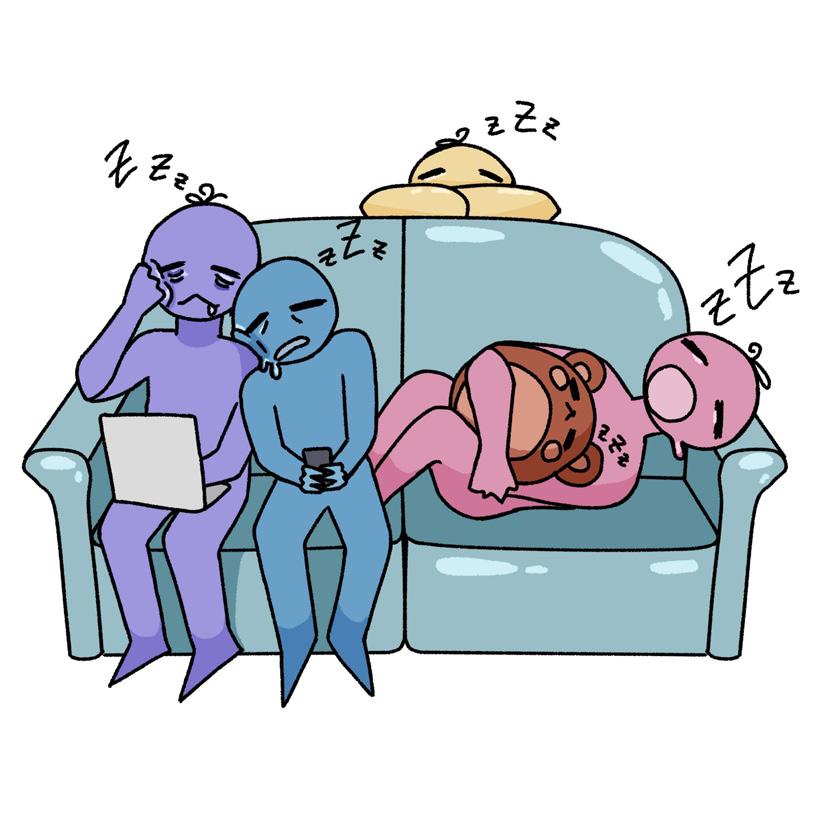
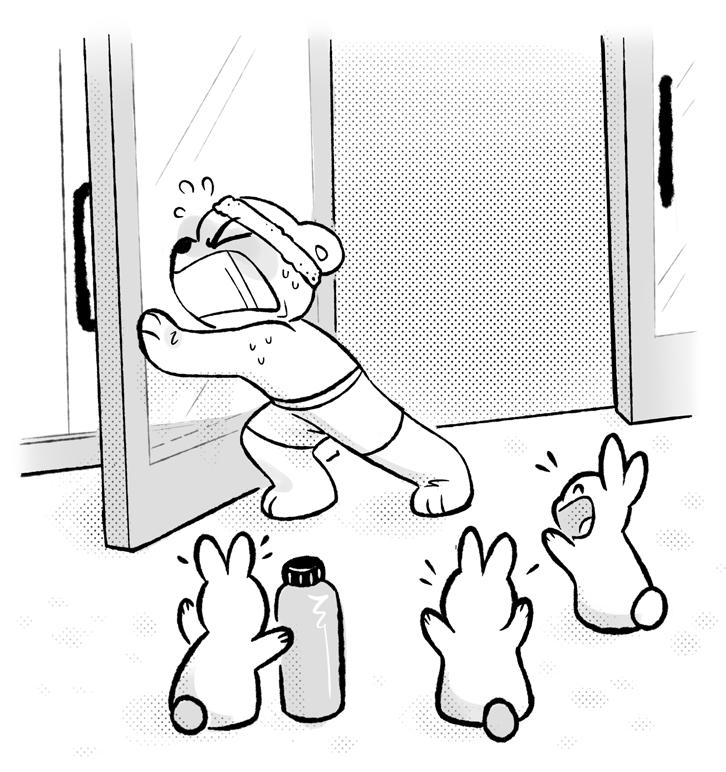
So, the night before the first day of second semester, I enrolled in intro Biology and Calculus courses.
Maybe I could manage to switch to a STEM major, or add a STEM minor. I thought a STEM education would make my degree worth such a costly tuition and that it would even make me employable after college.
I had never enjoyed a math class before, but somehow the rationale worked out in my mind that a college-level calculus course was where the sparks would go off. Science classes had always been alright for me, so I figured that I could get through it whether I liked it or not. The regret sunk in just after the Add/Drop deadline.
I used the resources available and engaged with the content, but no matter how
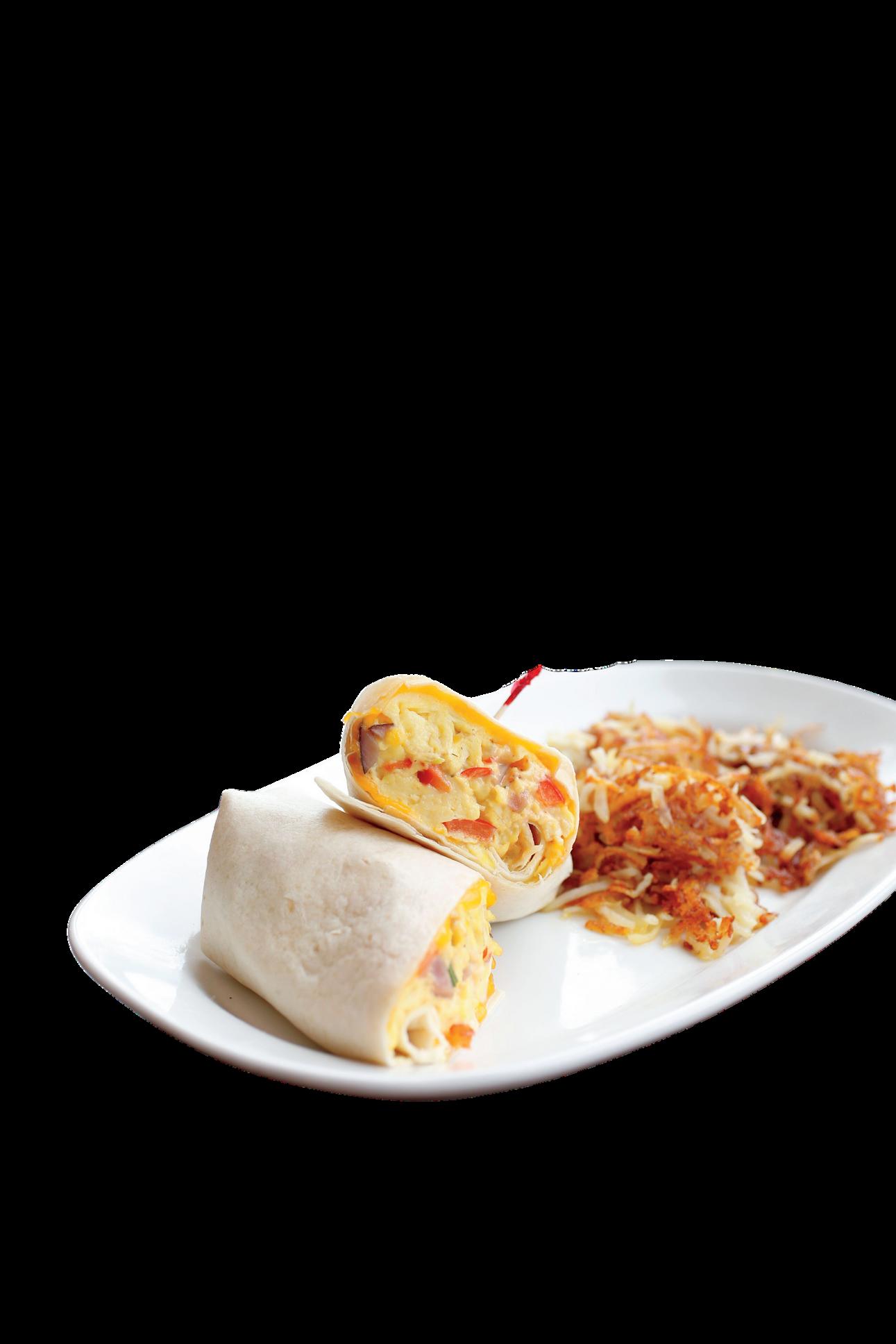

well I understood the material, I wasn’t interested in it. These big STEM courses were challenging, certainly, but I didn’t feel intellectually stimulated.
I rarely learned about a topic in biology or calculus and thought, “I want to know more about this!” If your field of study isn’t sparking curiosity beyond the syllabus, why study it?
Whether or not STEM classes would make my resume more prestigious, I didn’t care about what I was learning in them. Is the prestige and the opportunity to get a higher-paying job worth it when you just aren’t passionate about it?
Maybe. Maybe not. That question might not be as relevant as we think it is.
A study from the National Bureau of Economic Research found that STEM majors make more money right out of college, but that their peers in other fields of studies catch up in earnings within 10 years.

Philosophy majors might not be destitute, after all. This is just to say that, if you’re thinking of studying STEM purely to make more money, you might have more to think about.
Like, what classes make you want to learn more about a subject? If these classes are in the humanities, why not delve into more of that in
college?
Income prospects aside, there are a lot of reasons to study humanities other than their comparative value to STEM.
Gerald Greenburg, Senior Associate Dean of Academic Affairs at the College of Arts and Sciences of Syracuse University, wrote about the value of studying humanities in a time when less and less people are doing so.
“Through studying the humanities, one has the opportunity to get to know oneself and others better, the opportunity to become better able to understand and grapple with complex moral issues, the complexities and intricacies of humanity,” Greenburg wrote.
While true, Greenburg’s description of humanities doesn’t quell my fear of being jobless with a humanities degree.
What’s more comforting is that Greenburg believes that the skills you gain in humanities are applicable, much like the hard skills that you learn in engineering.
Not only are these skills applicable in one’s personal life, but they are also necessary in professional fields.
“Mathematics, the sciences, engineering, and technology are certainly useful, but the humanities provide another way of

viewing issues, and better decisions are made when diverse opinions and ideas are considered,” Greenburg writes.
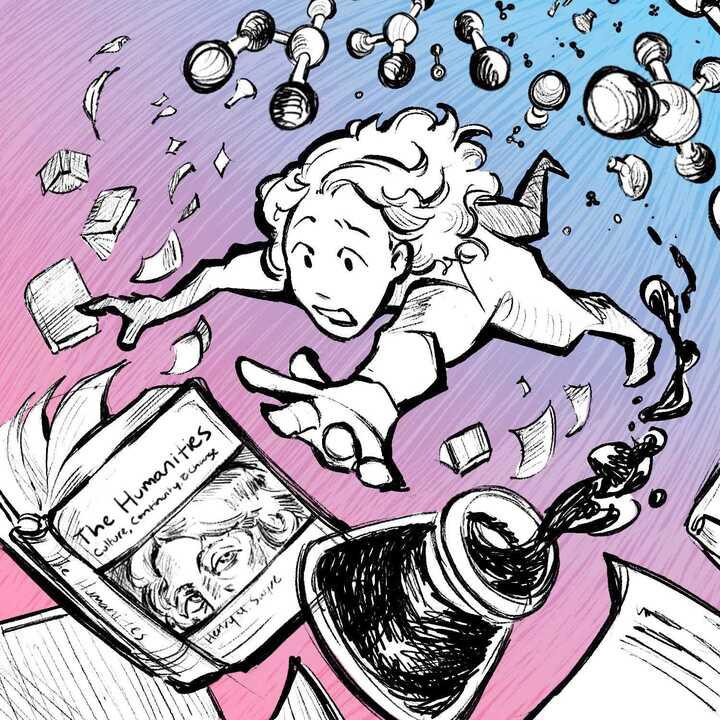





If you think you want to study the humanities or social science, know that you will learn applicable skills, even if they don’t feel as useful as Python or Java. You will be able to communicate well and analyze complex problems in a variety of fields.
And, if you take classes that spark your interest, you’ll even enjoy what you’re studying along the way.
Of course, there are factors beyond passion and pay that affect what you decide to major in. There’s family pressure and scholarship
guidelines and more. Whatever other factors are affecting your decisions, don’t let the pressure to study STEM eliminate the possibility of studying another field that you might care about.

If you’re like me, and you always preferred the humanities and social sciences to STEM, there’s nothing wrong with that. Your education will be valuable with or without a CS minor tacked on.
Explore your options, but don’t let the pressure to study STEM blur what you already know about yourself. You don’t like math, and you probably never will. And that’s ok.
STUDLIFE.COM Wherever you are, stay connected: Subscribe to our free e-newsletter... head to studlife.com now and sign up! FACEBOOK.COM/STUDLIFE @ STUDENTLIFENEWSPAPER @ STUDLIFE drink. dine play. WEEKLY BAR, RESTAURANT AND Open daily, from 7am until 2pm Dine-in, carry-out & delivery! VIEW OUR MENUS & ORDER ONLINE 8 STUDENT LIFE THURSDAY, SEP 21, 2023 REILLY BRADY | MANAGING FORUM EDITOR | FORUM@STUDLIFE.COM Caption this! Enter this week’s contest ILLUSTRATION BY JOY ANI 09/21 WINNERS
place
the actors and writers strikes end soon. Streaming C-SPAN isn’t cutting it. Darren Jacobs, WashU Parent
my suitemates
minutes
study
current WashU student
last four braincells during midterm week. Brandon Yoo, current WashU student Scan the QR code to enter your submission by 11:59 pm on Monday.
ILLUSTRATION BY ERICA SHI First
Hope
Second place Me and
5
after saying we should
together. Alexa Wienhoff,
Third place My
LILY TAYLOR JUNIOR NEWS EDITOR
ILLUSTRATION BY ANAELDA RAMOS






















 ELAHEH KHAZI CONTRIBUTING WRITER
ELAHEH KHAZI CONTRIBUTING WRITER





















